Some of the most beautiful work of this craftsman, and many others, are in this book “Liège Gunmakers through their Work. 1800 - 1950”.
For more detail see: LIEGE GUNMAKERS
P.J. MALHERBE
Here is a rifle called "of Brunswick" manufactured by
the Liège firm
P.J. MALHERBE.
This company has already been extensively mentioned on the site, where, by the
way, appears, almost at the end, a similar weapon photographed at the War
Heritage Museum (formerly Musée Royal de l’Armée) in Brussels, but without
explanation.
It is a
rifle (or even rifle, we have no data about this weapon, neither length nor
caliber very particular, originally in any case, see below) with Russian
percussion of the 1843 model called Brunswick, otherwise very well known in
Great Britain (see https://en.wikipedia.org/wiki/Brunswick_rifle ); note that
the Russians call it "Luttich", the name of the city of Liège in German.
It was
used during the Crimean War (1853-1856).
Here’s
what an English-language site says:
https://collegehillarsenal.com/Rare-Russian-Model-1843-Luttich-Carbine-The-Russian-Brunswick-Rifle.
For
Francophones the same thing: the Gazette des Armes 550 of March 2022 devoted an
article to it (chance sometimes does things well).
According to the GDA, 15,000 rifles (carabines) were
ordered by Russia, but only 3,000 were manufactured by
P.J. MALHERBE.
It should be noted that the copies of the GDA and the WHI have a height (1848,
the so-called of Hesse) more sophisticated than that of the copy in question.
There
should be a number on the masselotte.
The thumb
piece belongs to the arms of Tsar Nicholas I.
The
buttplate is engraved of the imperial eagle.
We see a
B crowned with the Belgian control punch near the bridge.
Here is
what can be said of the projectile at the beginning: it is a round ball, at the
beginning, surrounded by a clip which, during loading, must be inserted into the
two deep stripes of the barrel.
There was
also a warhead ball (modification known as Kulikovsky) with two nipples.
See also:
https://www.gunboards.com/threads/bullets-for-the-russian-brunswick-rifle.1183101/
GP with the help of the Gazette des Armes and Internet
P.J. MALHERBE
Swedish rifle with a moving chamber mechanism made by
P. J. Malherbe.
Caliber
14.85 mm.
Most of these rifles were manufactured in Sweden, only
a small number, at least a hundred, it seems, since this one bears the number
97) comes from
P.J. Malherbe et Cie,
25, quai Saint-Léonard in Liège, registered at the proofhouse of Liège between
1850 and 1869 (at the same address was registered
P.J. Malherbe,
registered at the proofhouse of Liège between 1836 and 1850).
The date of manufacture does not appear on
Malherbe
rifles, which is the case for rifles made in Sweden.
The GvA
marking on the stock corresponds to Gustaf Magnus von Arbin, born in 1818 and
inspecting officer at the Carl Gustav rifle factory in Eskilstuna, Sweden.
P.J. MALHERBE
Malherbe (Pierre Joseph) known as “de Goffontaine” (entity of Pepinster (Verviers)) and Malherbe Philippe Joseph (or Malherbe son or Malherbe & Co) are the same (big) firm. In 1807, Pierre Joseph Malherbe de Goffontaine had 3 manufactures and after the fall of the French regime, it repurchases with the son of Gosuin manufactures quay St-Léonard in Liege and of Chaudfontaine (in addition to his).
According to the datings of the weapons (flint - percussion) it could be possible to differentiate the P.J., but the name “de Goffontaine” is generally allotted to Pierre Joseph.
HPH
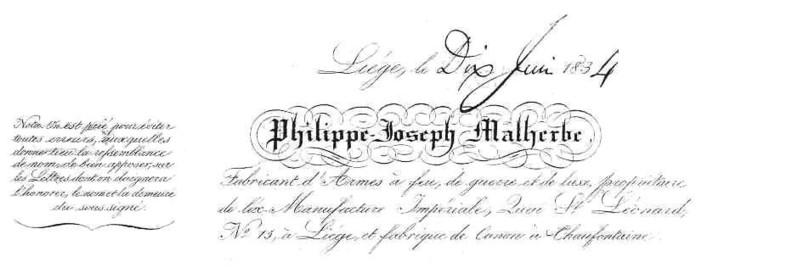
P.J. MALHERBE
Il s’agit d’un fusil à percussion fabriqué par P.J. Malherbe, artisan bien
répertorié sur le site, où l’on trouvera des descriptions d’armes voisines de
celle-ci.
Marquages : PJ Malherbe & Cie à Liège sur la platine, ovale ELG et numéro 672
sur le côté gauche du canon, monogrammé (HL ou JH selon le sens de lecture…).
Chris
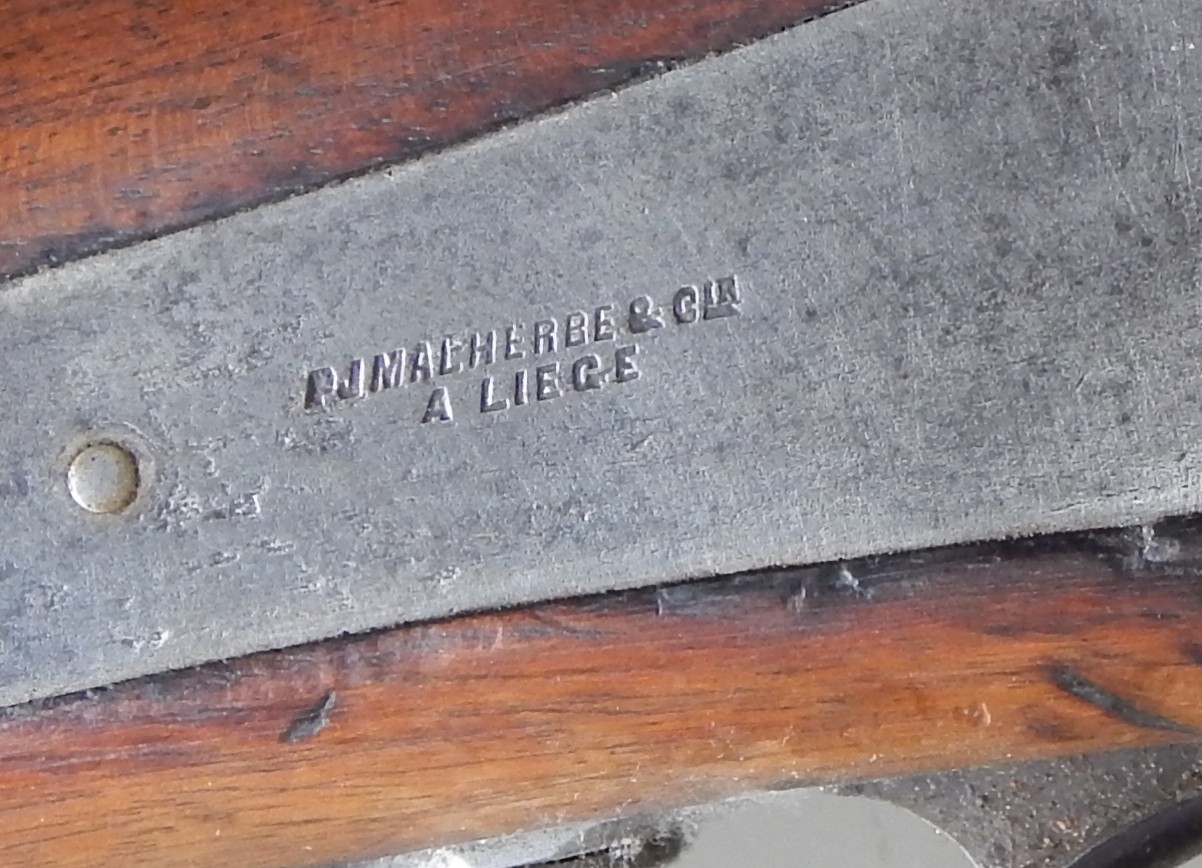
P.J. MALHERBE
Here is a very nice percussion rifle probably intended
for precision shooting, made by P.J. Malherbe.
The weapon has a luxurious finish, with fine engravings
on the metallic parts, a trigger guard with two fingerrests and a hammer in the
shape of a fishhead. The marine-inspired decoration is completed by a
shell-shaped primer tank on the butt. This last motif is recalled on the front
of the gun under the barrel.
The aiming of the weapon for precision shooting is
attested by the "target" type sights, as well as by a stetcher trigger.
The only identifiable marking on the photos is “P.J.
Malherbe & Cie à Liège” on the lock.
Chris
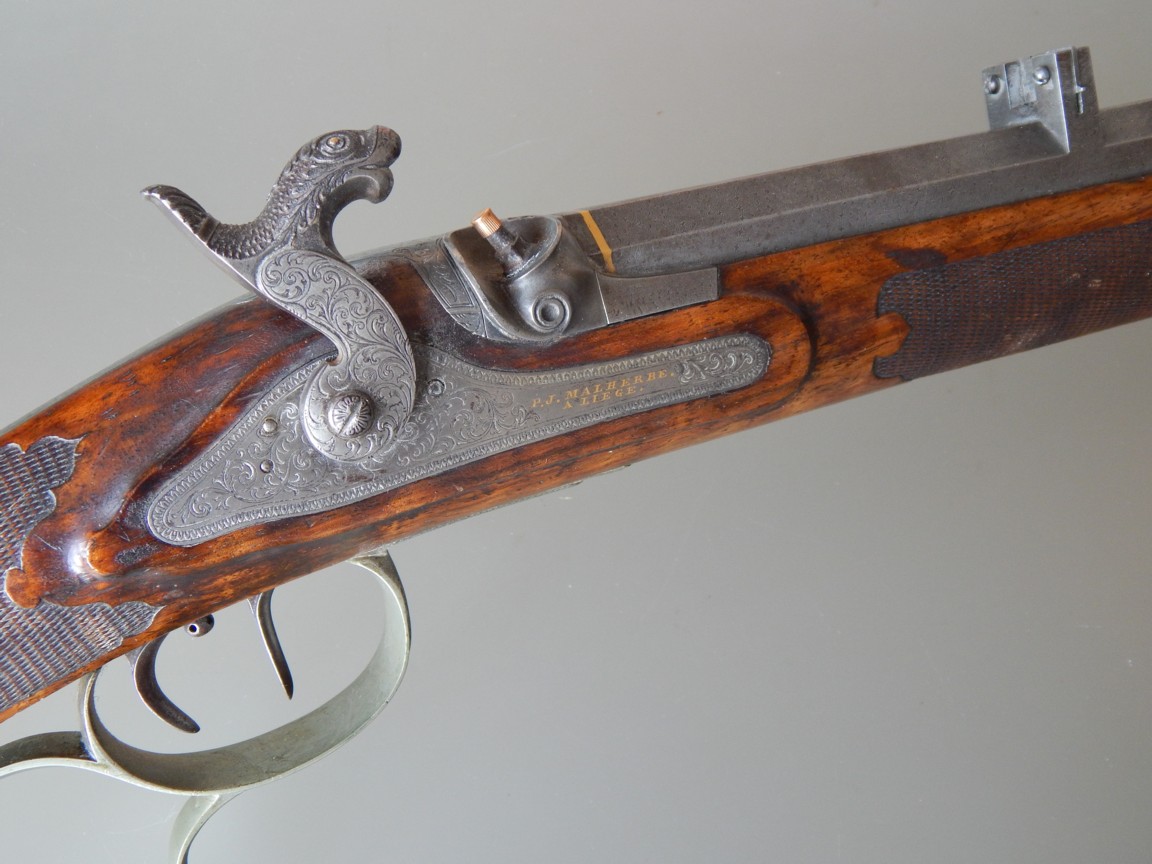
P.J. MALHERBE
P.J. Malherbe percussion pistol
Here is
a beautiful percussion gun from the production of
P.J. Malherbe.
Markings:
P.J. Malherbe à Liége (with acute accent) on the lock.
W under crown on lock and barrel on right side.
Oval ELG left side barrel.
On both sides of the barrel: JB
under crown (left side), S under crown (right side).
Chris
P.J. MALHERBE
Here is a copy of the Swedish 1851 rifle with a movable chamber mechanism. It was designed by Swedish lieutenant August Gustaf Reinhold von Feilitzen, who was inspired by a Norwegian rifle.
Other
examples can be seen in the Museum of the Swedish Navy in Karlskrona.
On land, on water, for real!
(marinmuseum.se)
https://digitaltmuseum.org/021028282427/kammarladdningsgevar
Calibre
14. 85 mm, six stripes at 1/213. 8 cm pitch.
Most of these rifles were manufactured in Sweden, only
a small number at least a hundred it seems since this copy bears the number 97)
come from the house of
P. J. Malherbe et Cie,
25, quai Saint-Léonard in Liège, registered with the Liège proofhouse between
1850 and 1869 (at the same address was registered
P. J. Malherbe
et Cie., registered in the proofhouse of
Liège between 1836 and 1850).
The date of manufacture does not appear on
Malherbe’s
rifles, which is the case for Swedish-made rifles.
The GvA
marking on the stock corresponds to Gustaf Magnus von Arbin, born in 1818 and
inspection officer at the Carl Gustav rifle factory in Eskilstuna, Sweden.
During the search, a member of the team found a patent
filed by a certain
Edouard Malherbe
(I don’t know if he was related or not to
P. J. Malherbe):
it is the No. 4433 of 21 May 1857 which has very strong similarities with this
Swedish rifle. Here it is, by way of illustration. Not having followed the
courses of the Liege Armoury School, I am not able to spot the differences.
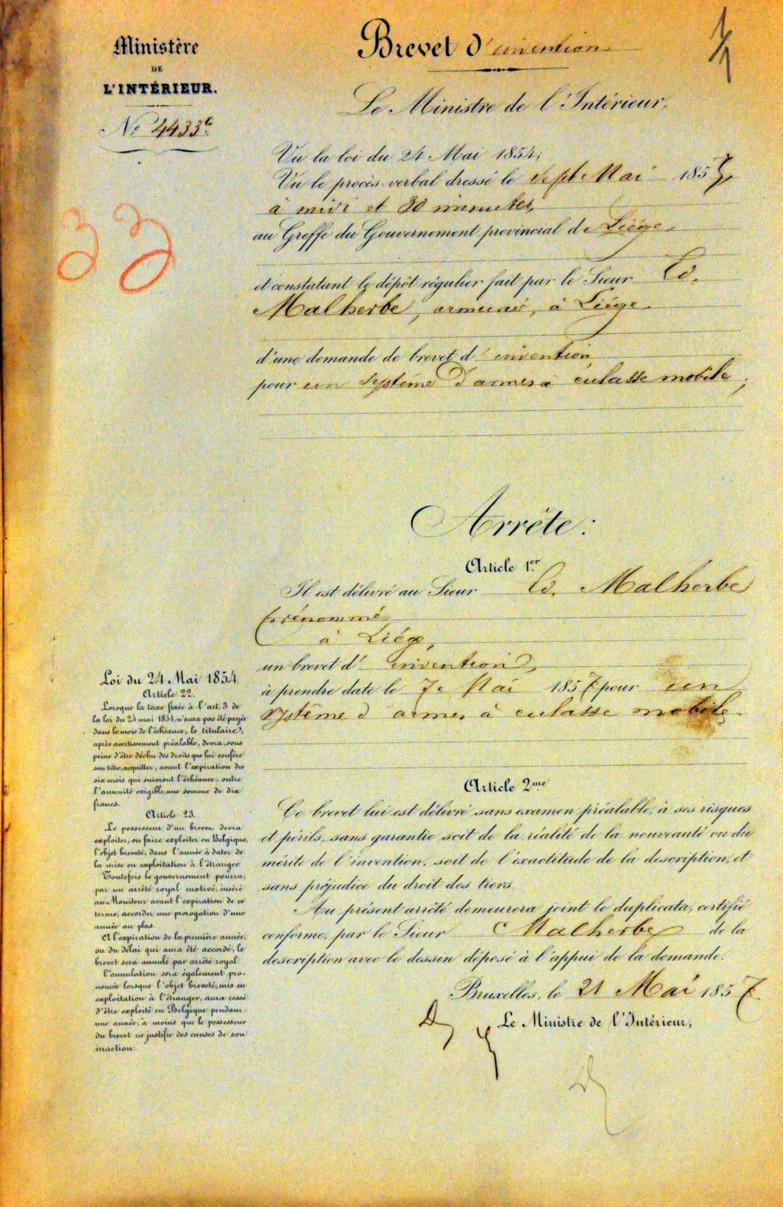
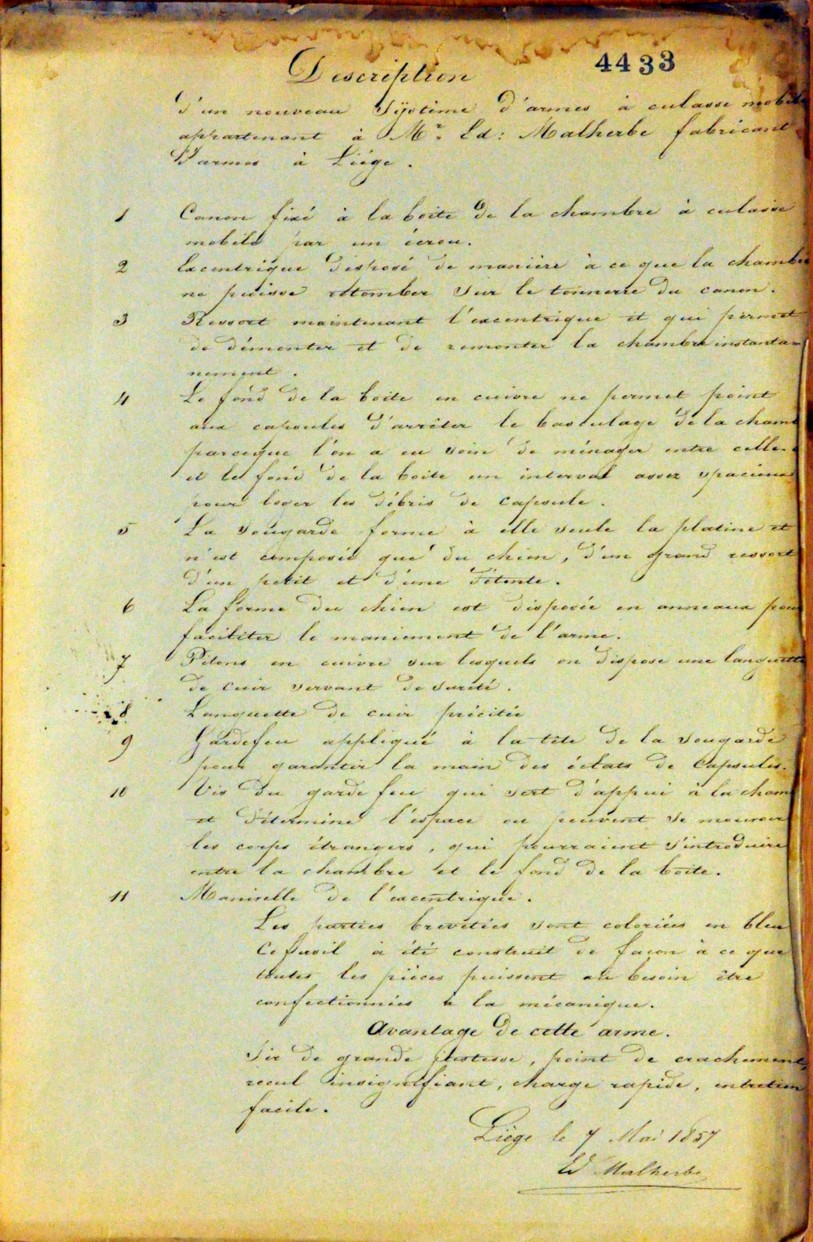

Finally, several members of the team made a match with
a Decortis
rifle, which also bears similarities to the
P.J. Malherbe
rifle.


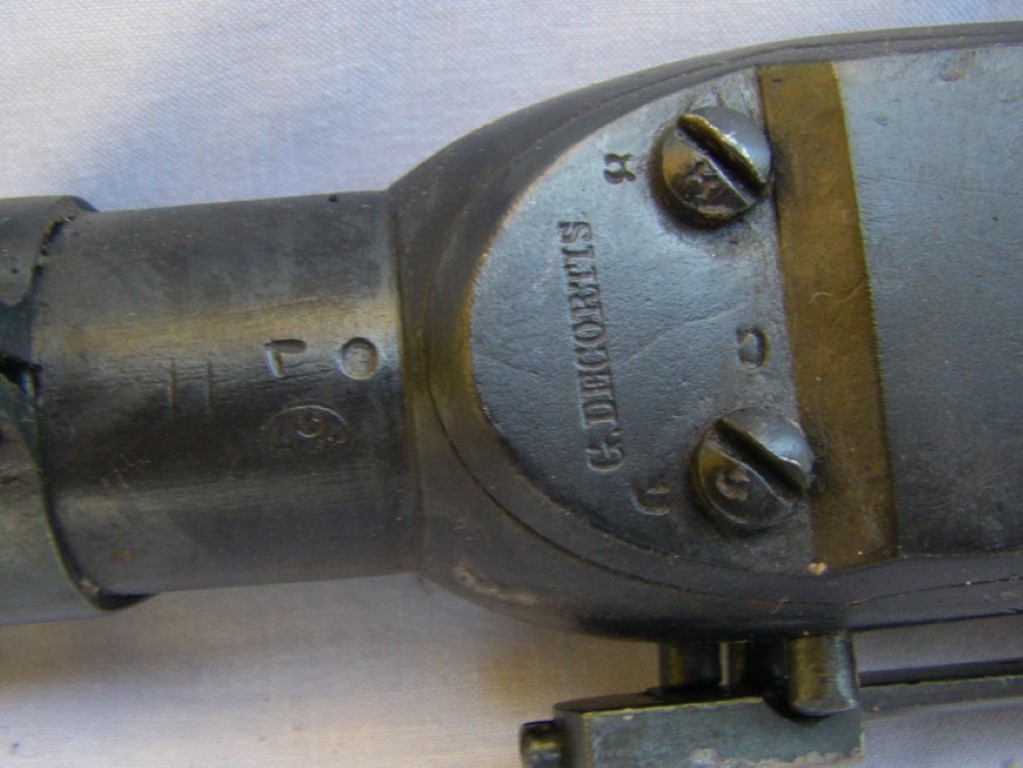
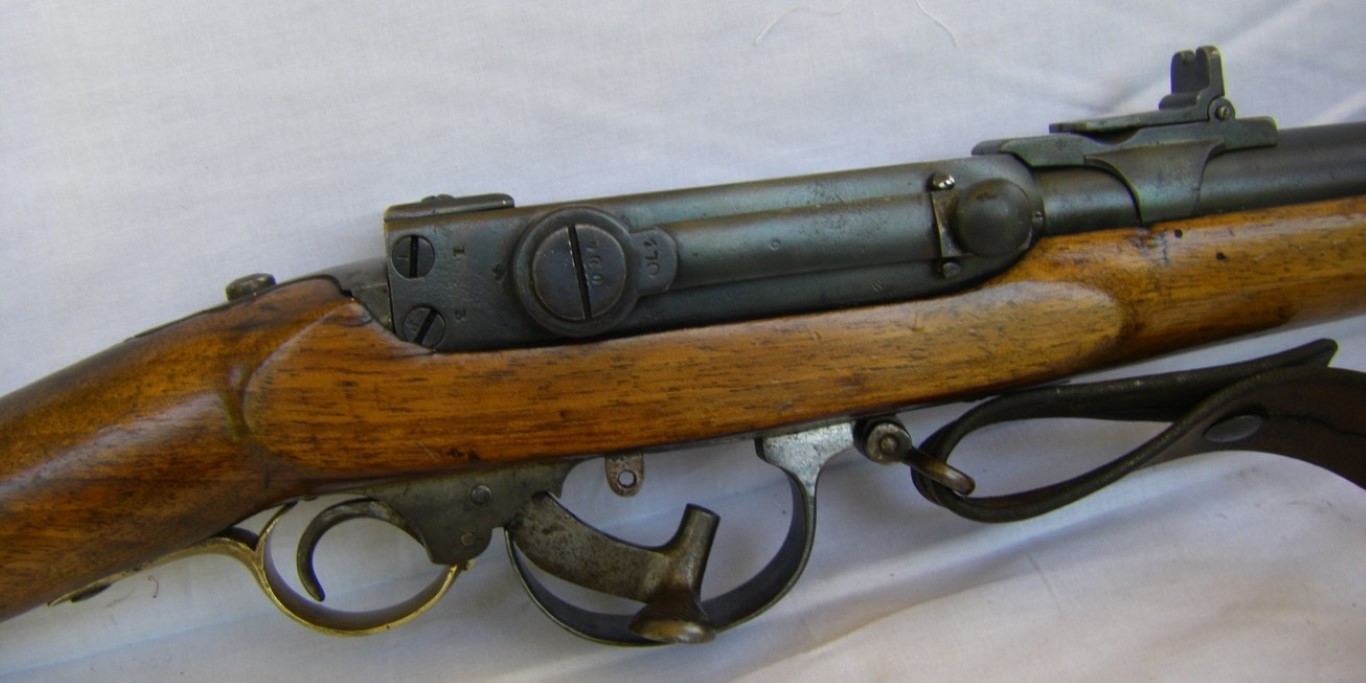
In fact,
thanks to the sagacity of a member of the team who consulted Mathieu Willemsen’s
monumental book, “Experiment en beproeving: vuurwapens van de Normaal
Schietschool (1855-1933) “, it turns out that the Norwegian Model 1846 infantry
rifle was the first to be used which has been used as a base falls under the
Scheel system. But the web is silent about this person.
On the other hand, the website
Norwegian military small-arms & blades » M1842 Army Kammerlader
(norskevaapen.no)
provides
a lot of information about Norwegian Army weapons. Thus we learn that the 1846
model is in fact an improvement of the 1842 model. It should be noted in passing
that Francotte produced 100 copies of 1842.
Mathieu Willemsen – who mentions the number of 1,500
copies of the 1846 model ordered from
Francotte,
also points out that
Francotte has
subcontracted part of the order to
Gilles Decortis!
This explains the copies signed
Decortis.
GP with the help of Max, the whole team, Andreas Ohlsson and Per-Erik Stenborg
from the Karlskrona museum.

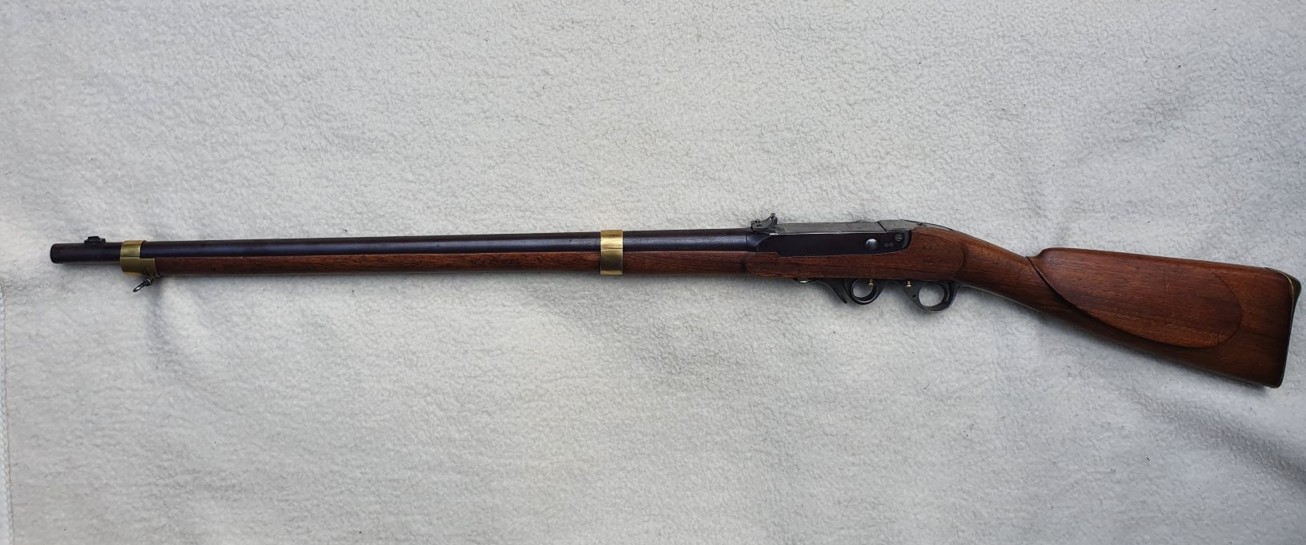
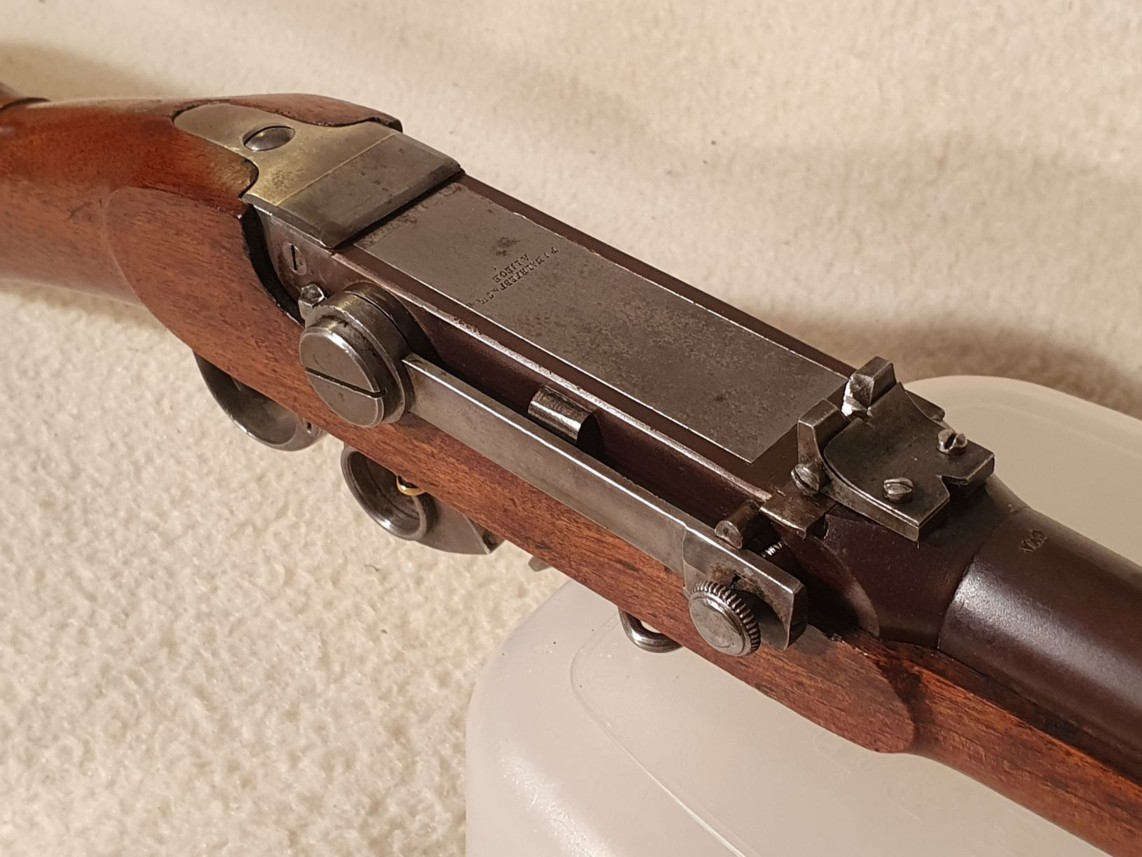

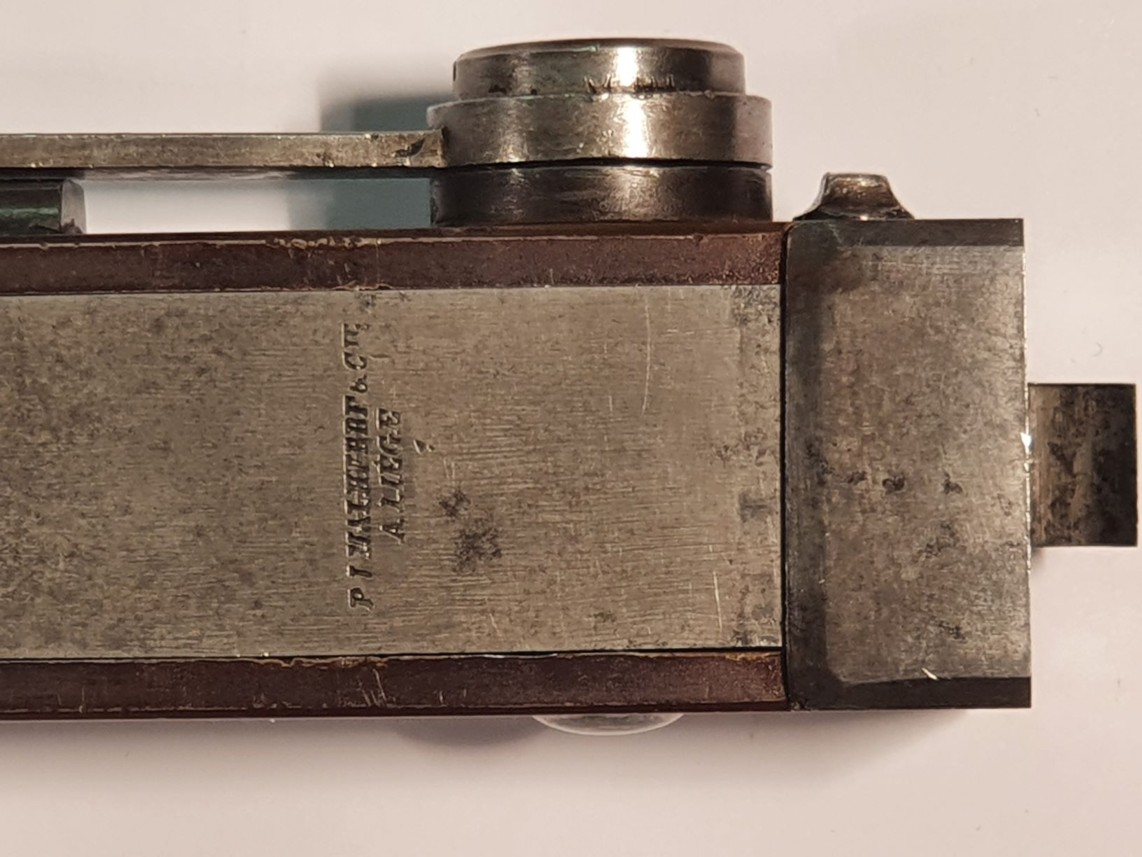
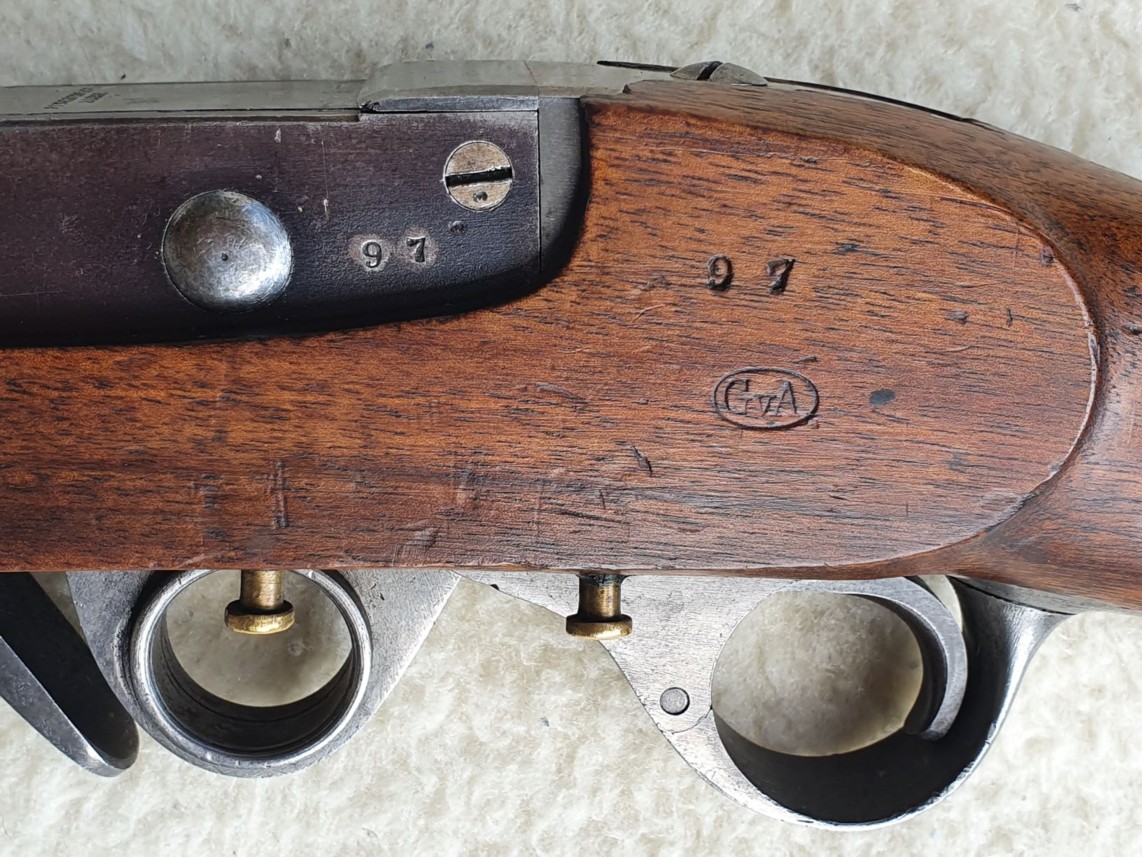
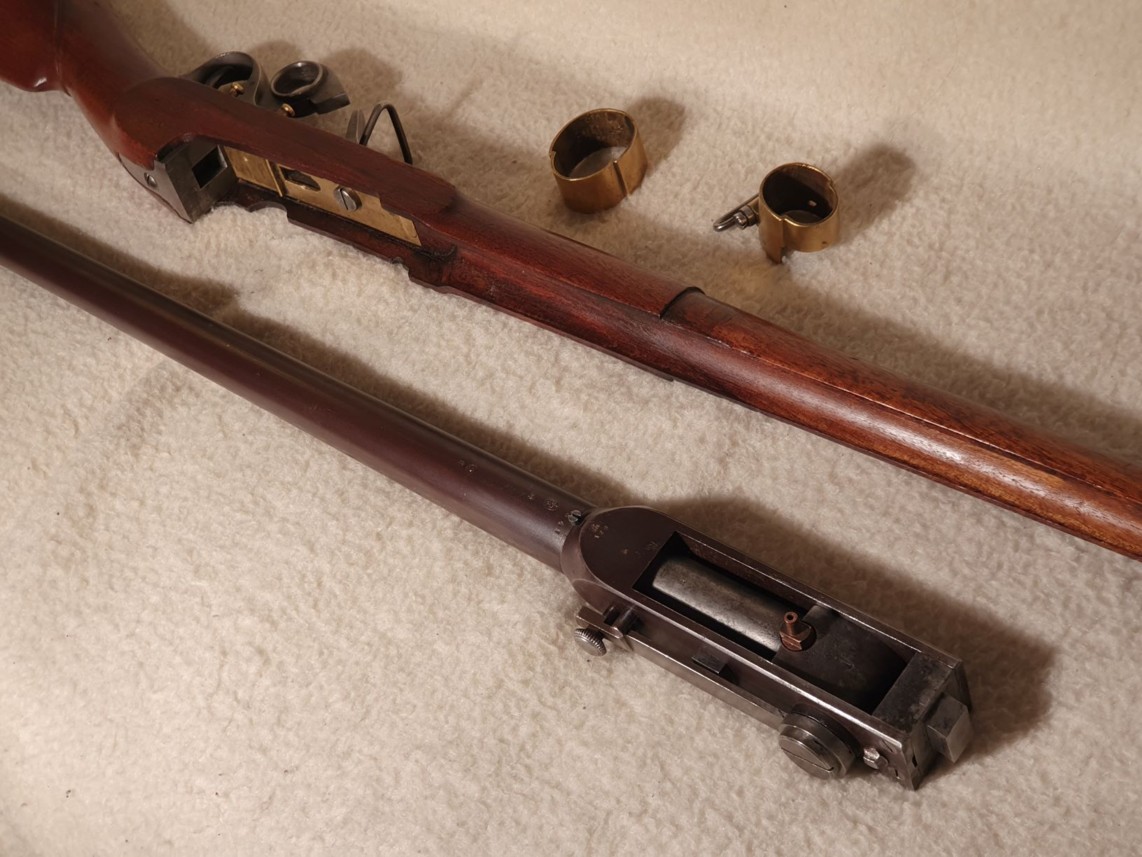
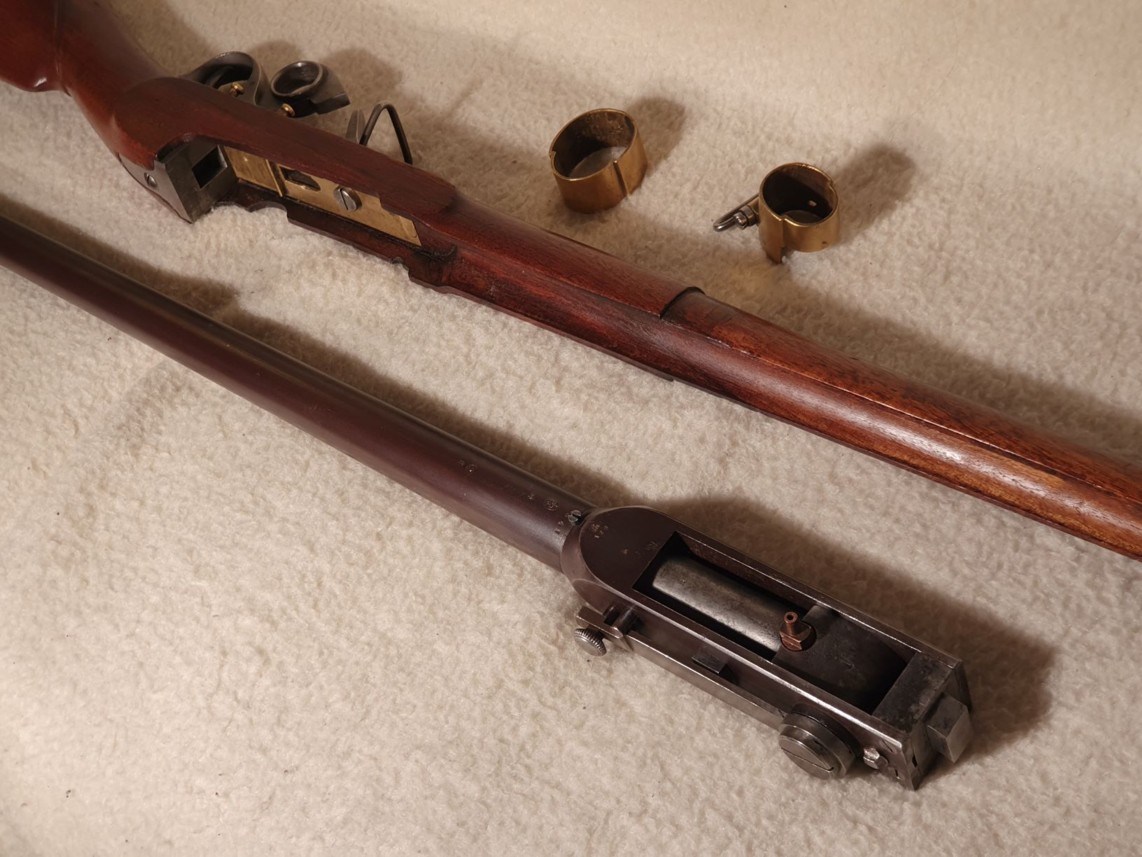
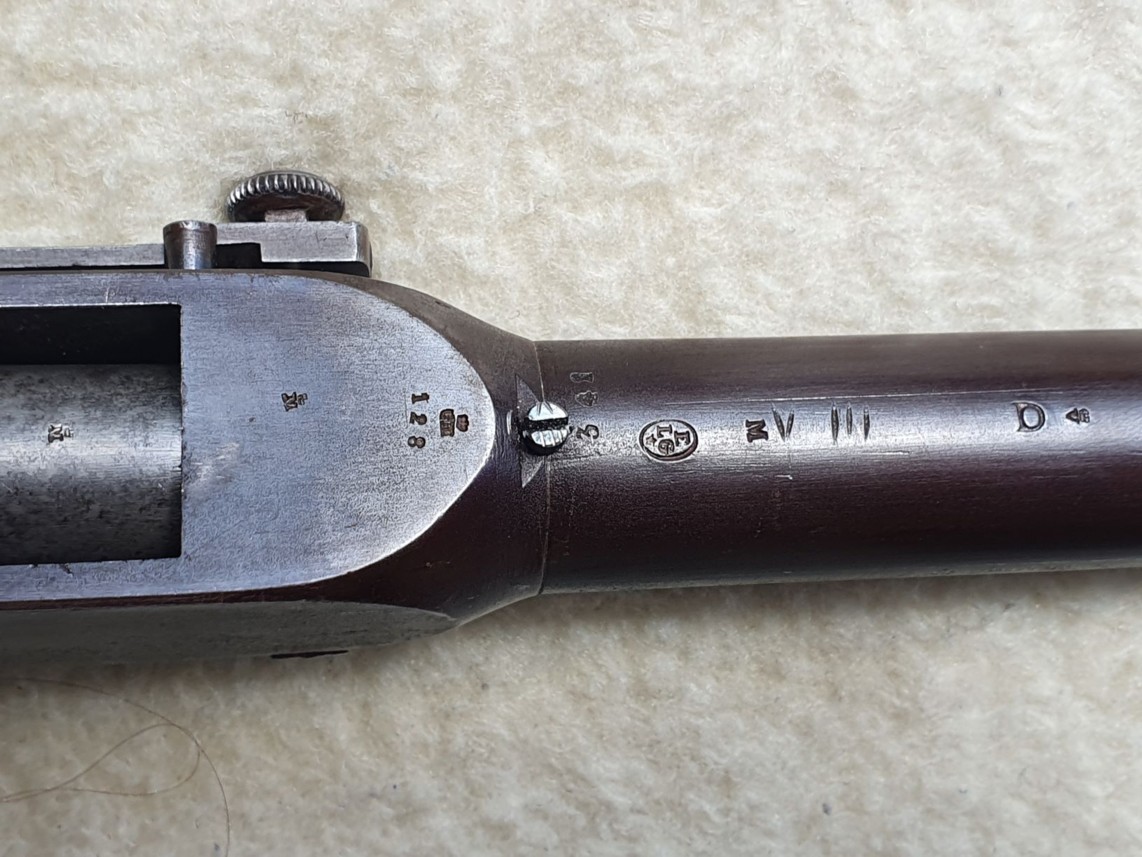
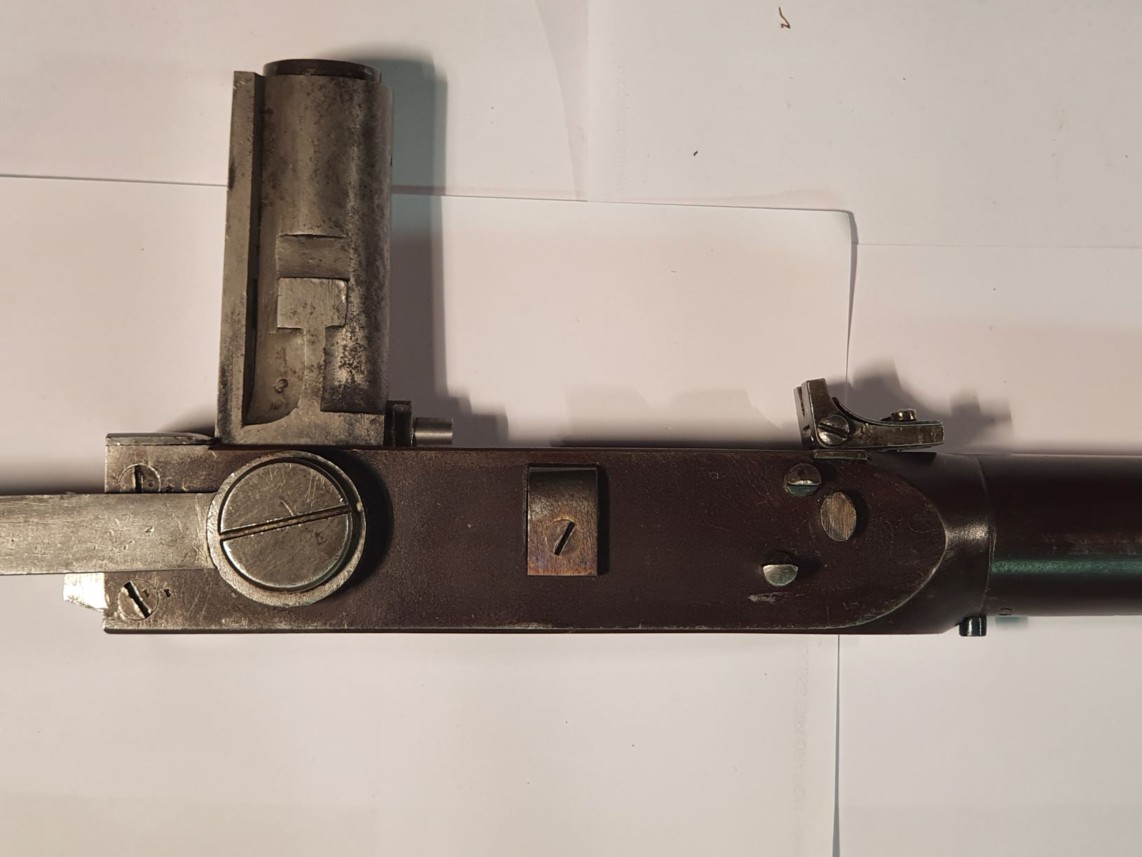
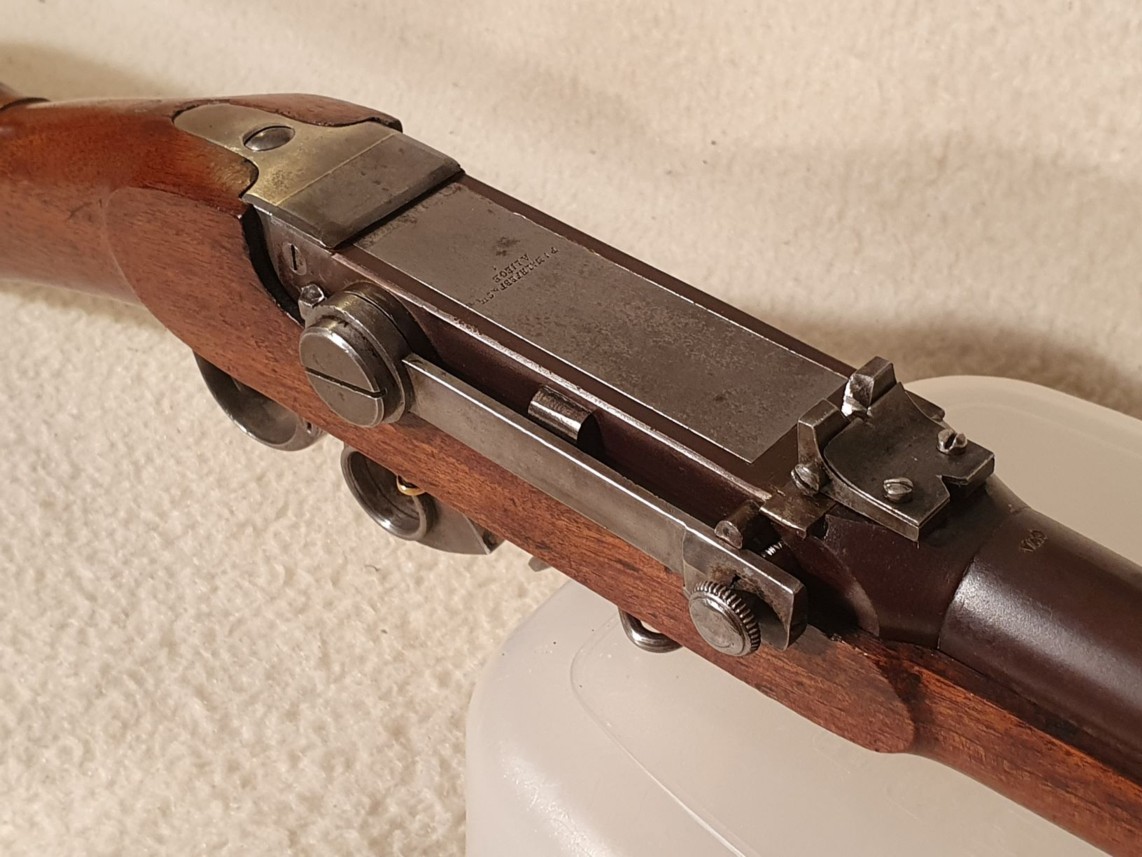
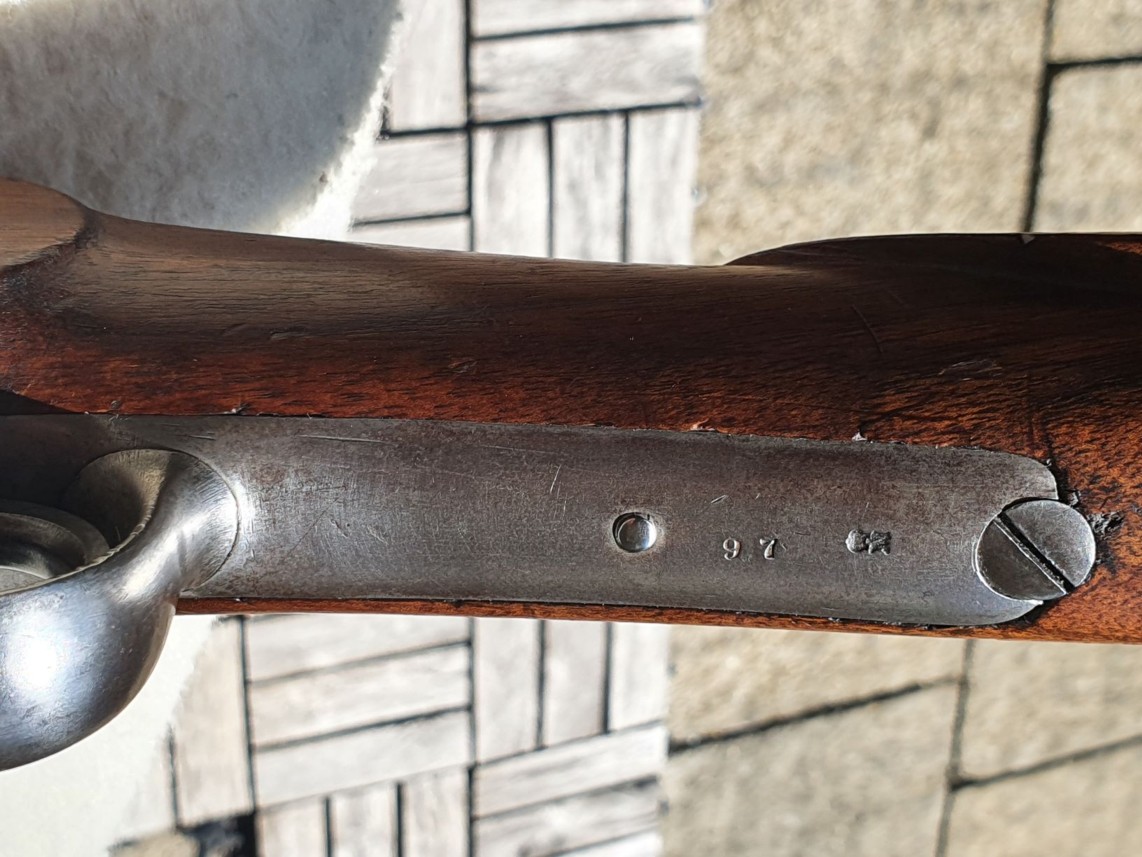
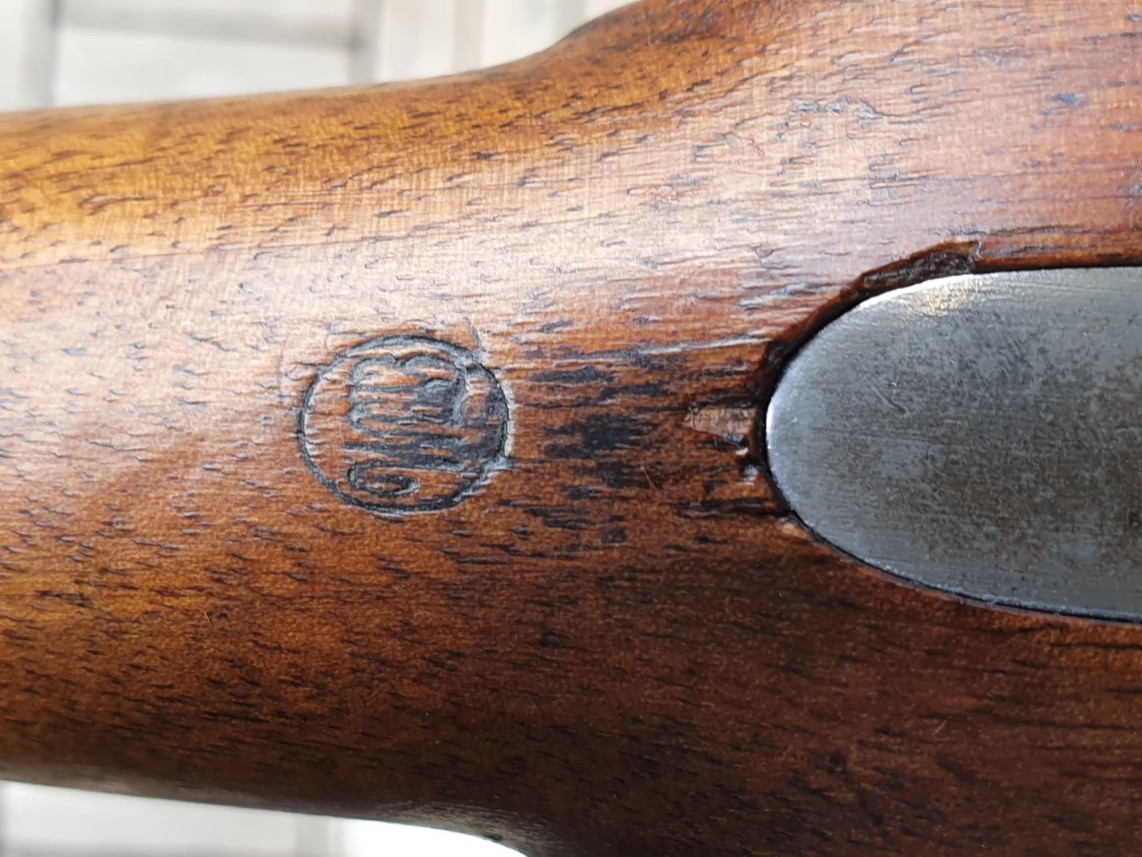
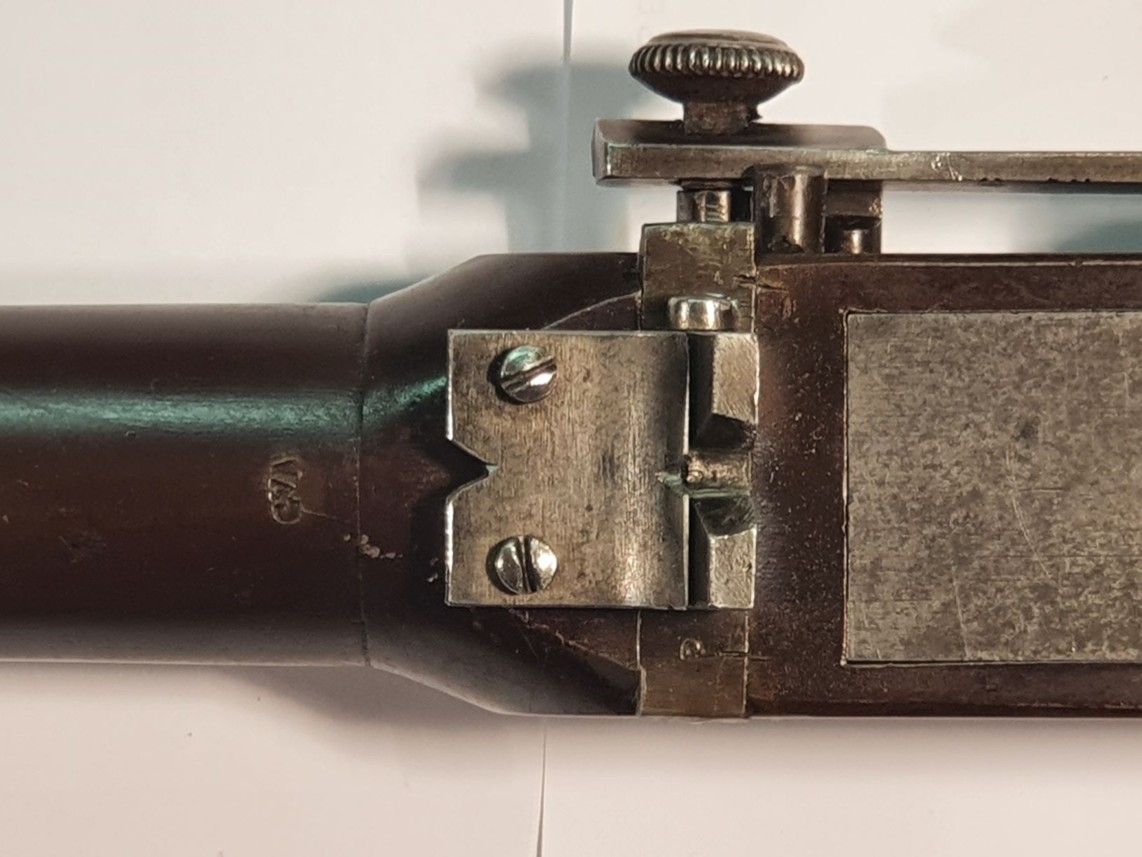
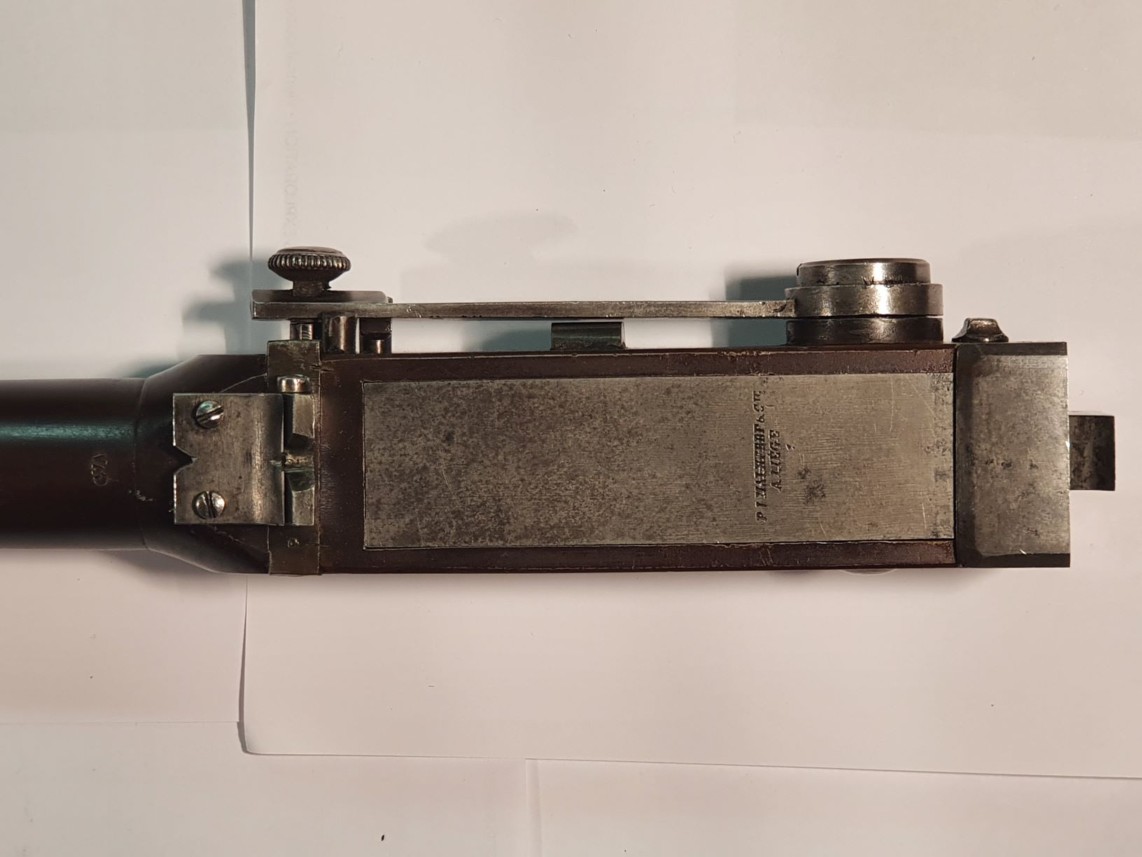
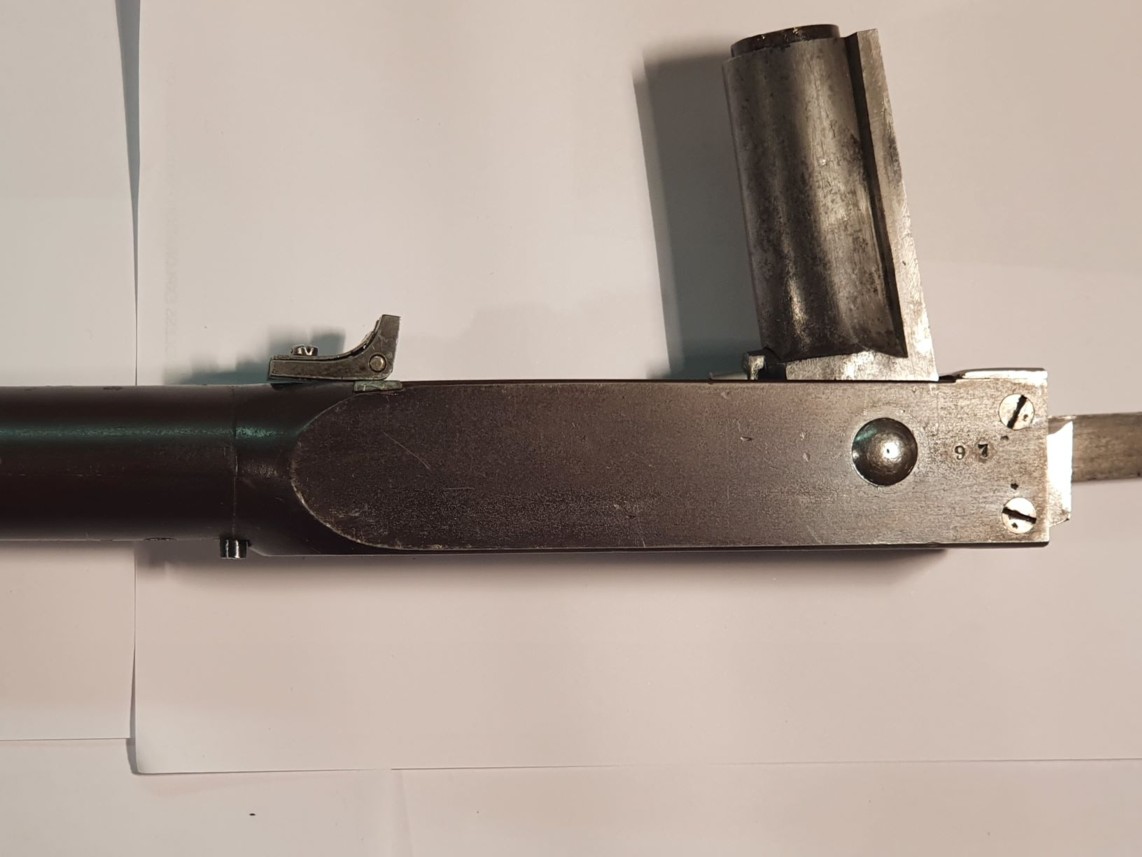

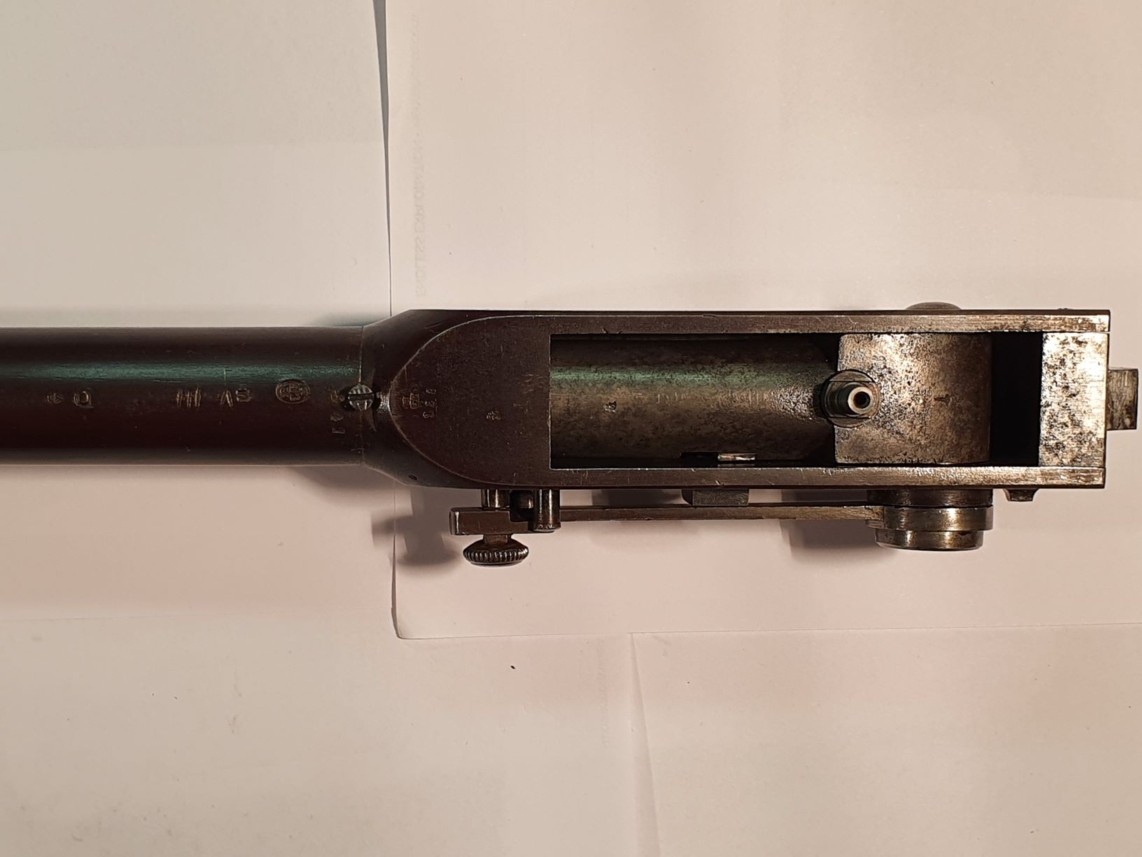
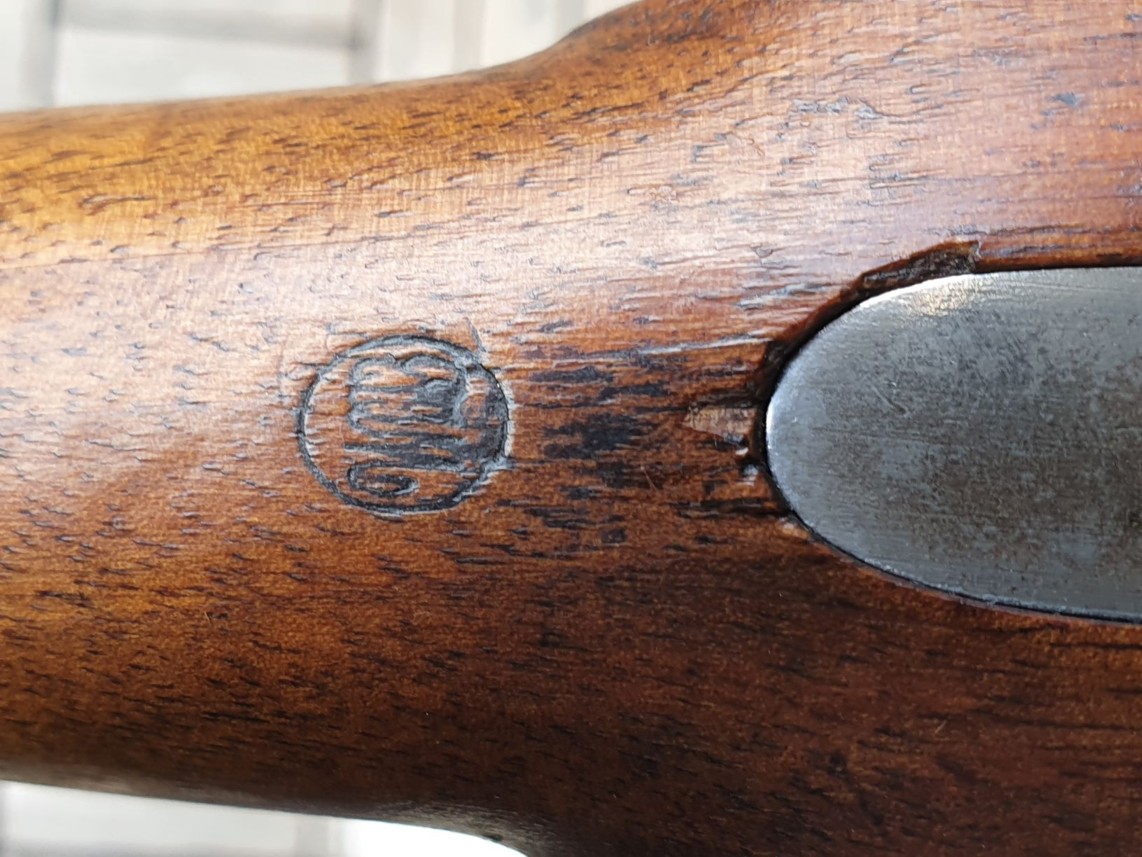

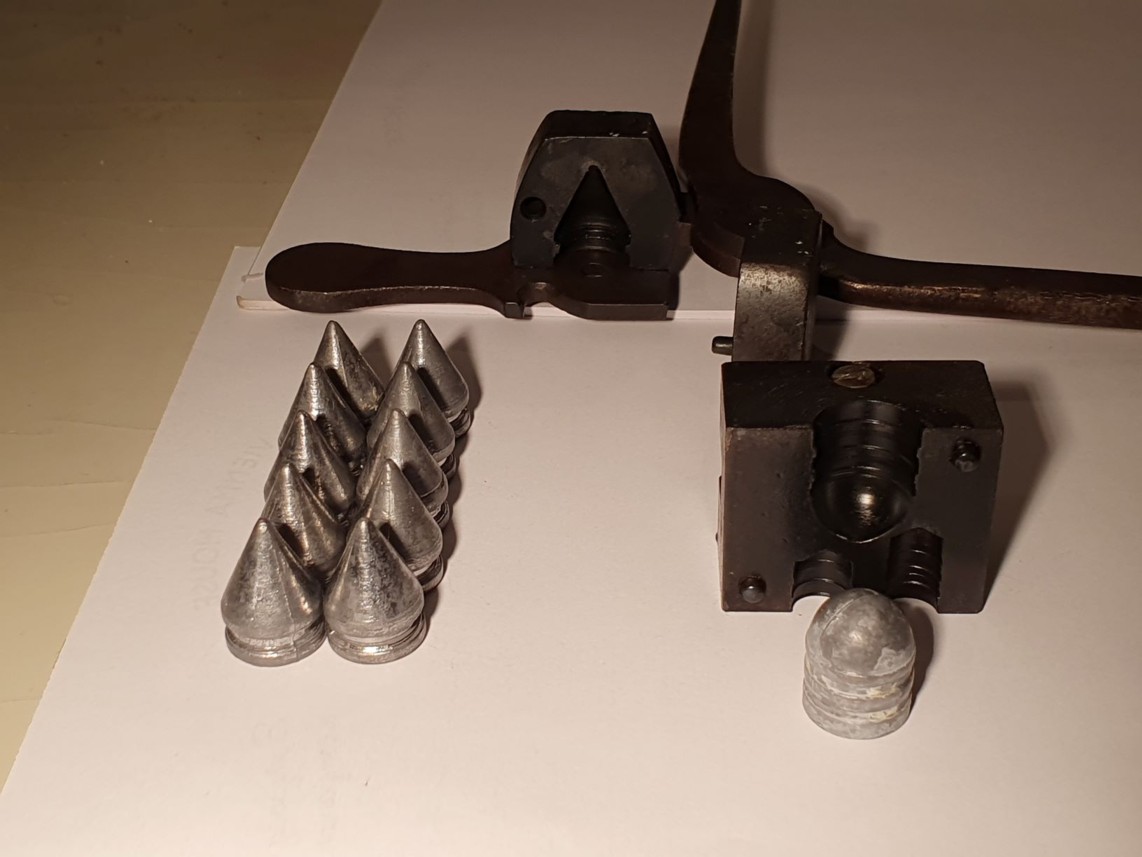
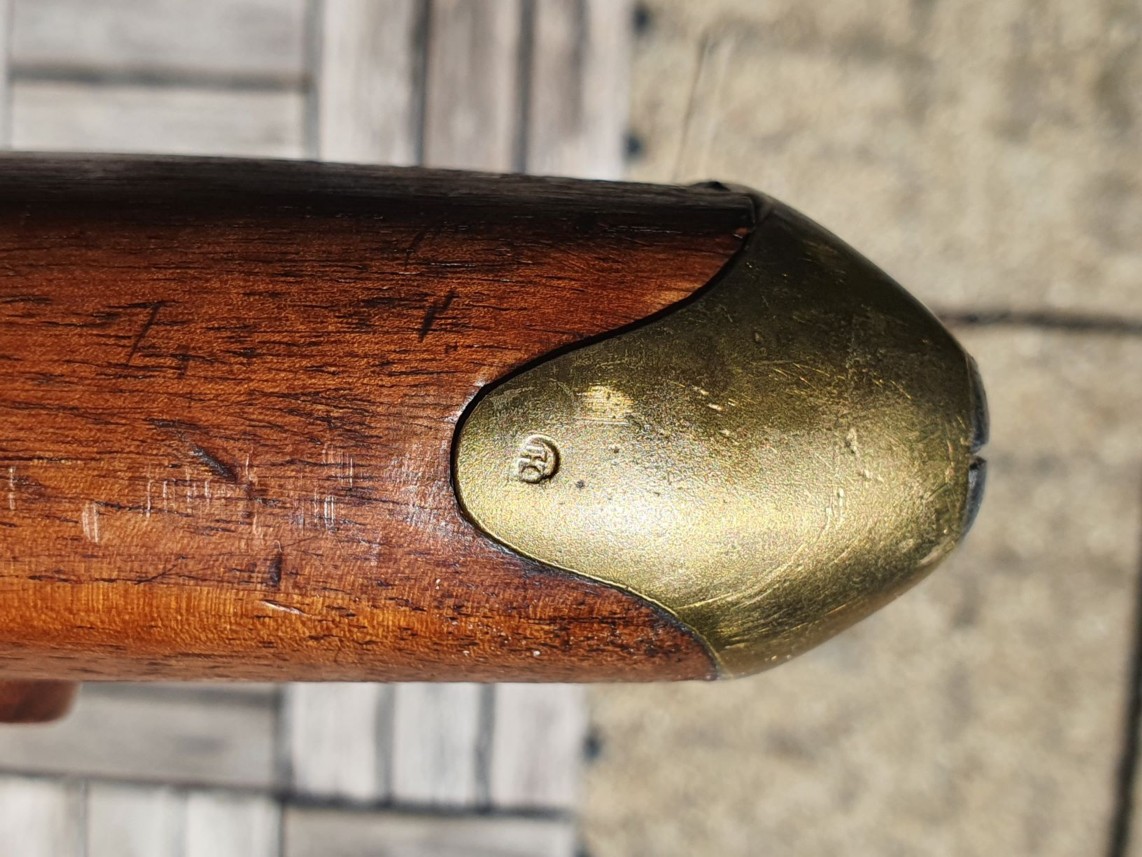
P.J. MALHERBE
Il s’agit d’un fusil PATTERN ENFIELD 1853.
Il a été fabriqué à Liège comme en témoignent les poinçons du banc d’épreuves liégeois relevés sur l’arme, à savoir :
ELG* dans un ovale vertical : acceptation définitive, en usage de 1846 à 1893.
Perron : acceptation définitive, en usage de 1853 à nos jours.
K et M couronnés : contremarques des contrôleurs, en usage de 1853 à 1877.
Pour les autres marquages cela devient compliqué de départager les marques liégeoises des marques étrangères.
D’après le propriétaire L.S.M. signifierait "LOUISANIA STATE MILITIA" Cette arme aurait donc été utilisée par la milice de la Louisiane, elle a vraisemblablement ajouté quelques poinçons d’acceptation à cette arme mais lesquels ??
La marque ronde imprimée sur la crosse (PHL si bien lu , dans un cercle) pourrait être les initiales de Philippe Joseph MALHERBE, fabricant d’armes à LIEGE quai Saint Léonard de 1850 à 1865 mais je n’en ai pas la certitude absolue ?
Les autres marques telles que JJ NH JS – JH couronné – FH couronné – lettre grecque Xi sont vraisemblablement les marques des sous-traitants liégeois ayant participés à la création de cette arme. Aucune liste fiable de ces sous-traitants n’a cependant été conservée.
Désolé de ne pouvoir être plus précis !
GG
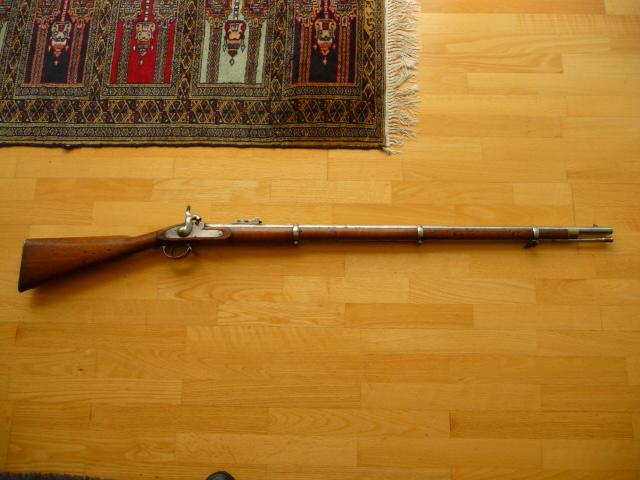
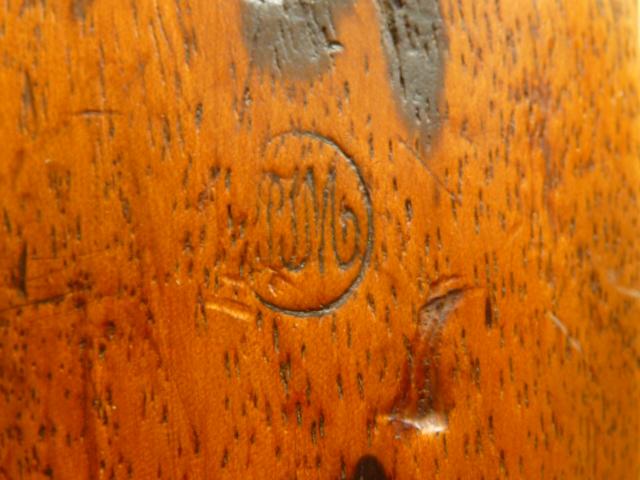
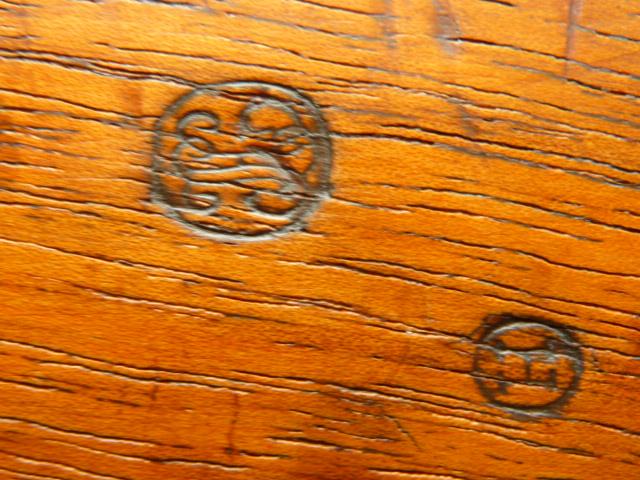
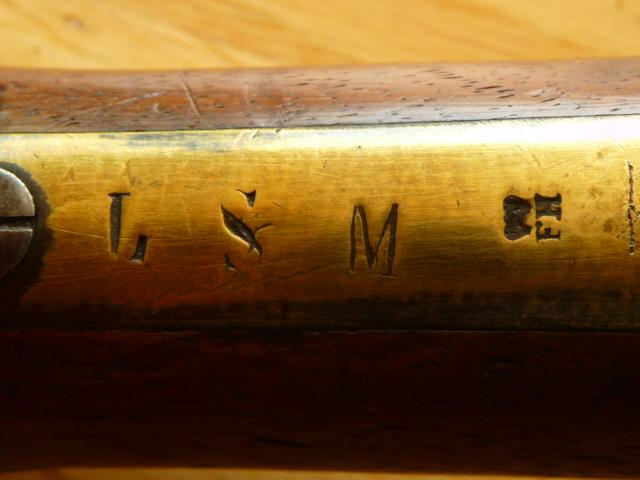

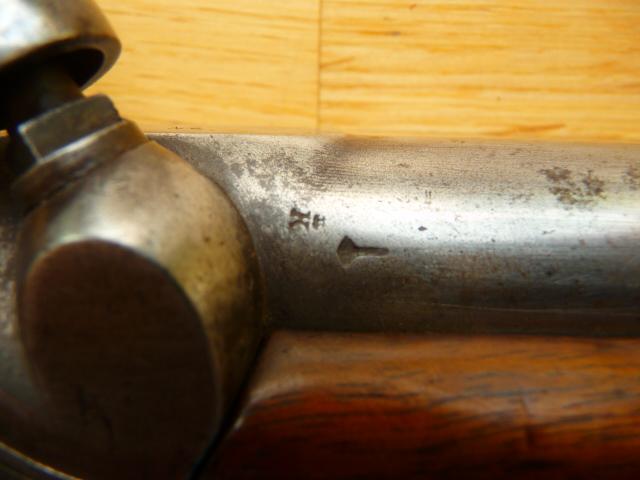
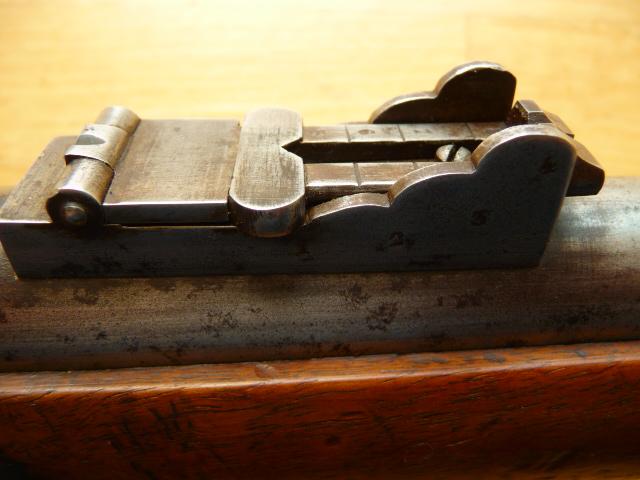
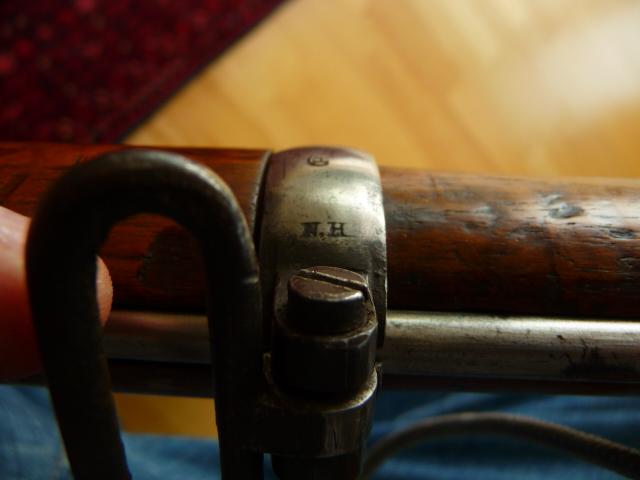
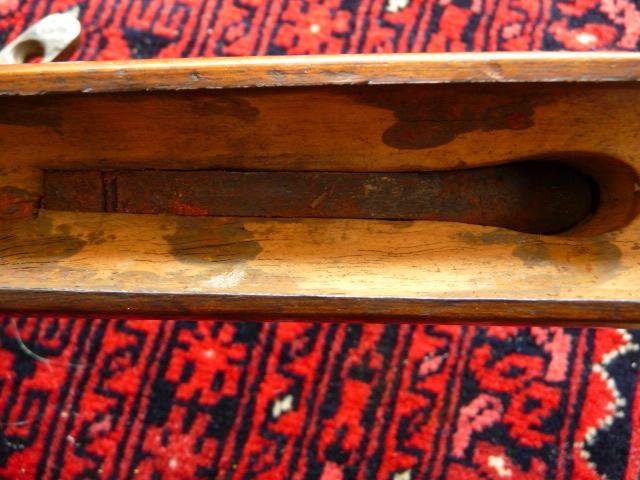
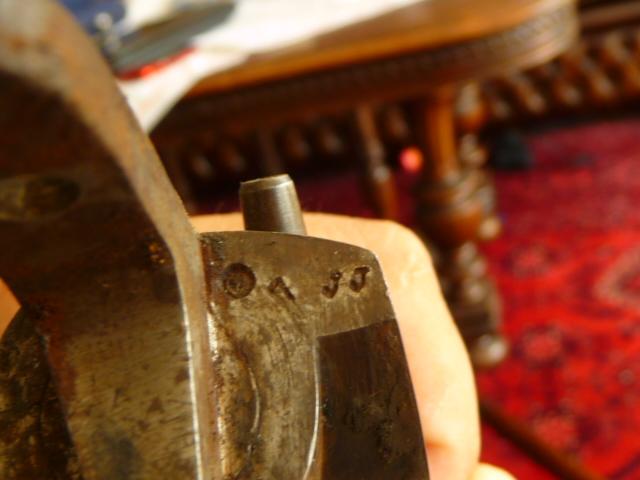
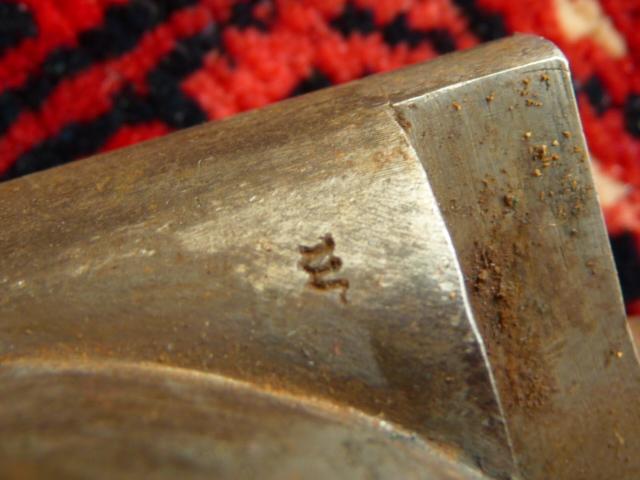
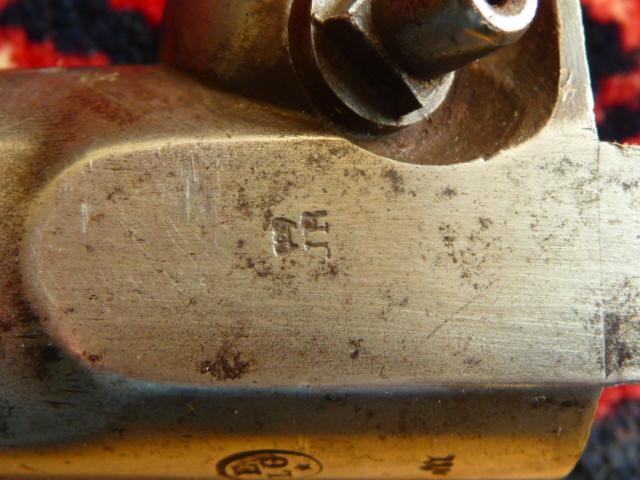
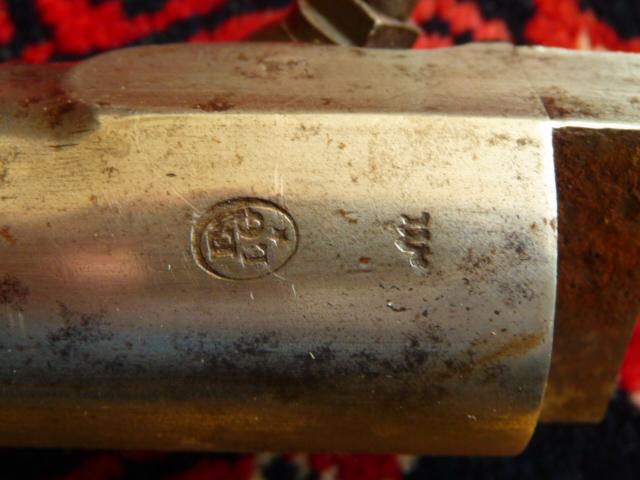
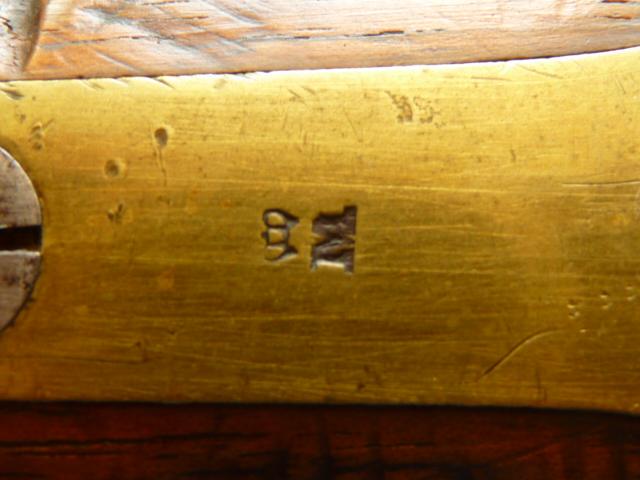
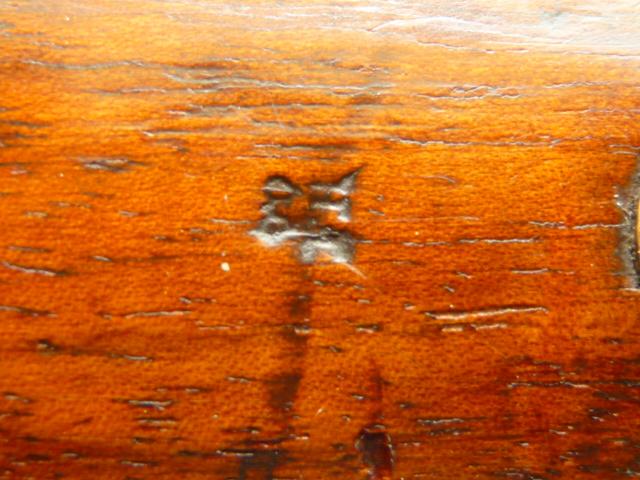
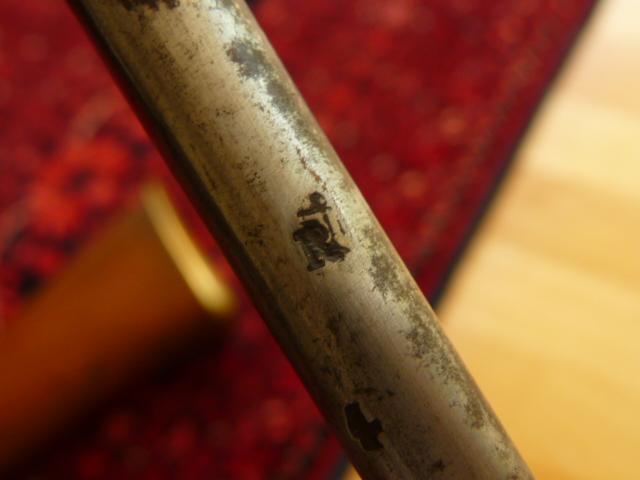

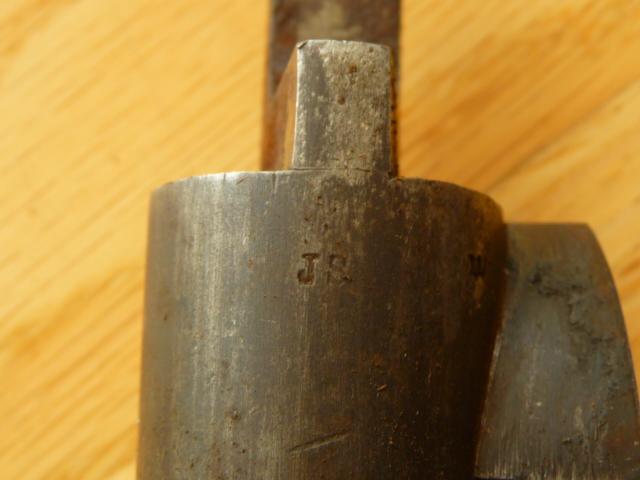

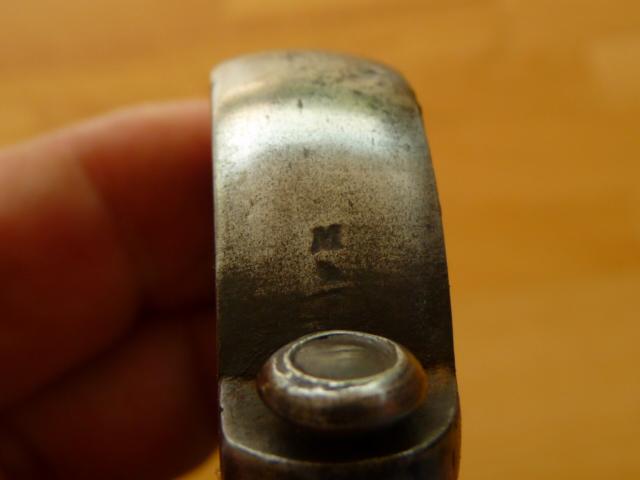
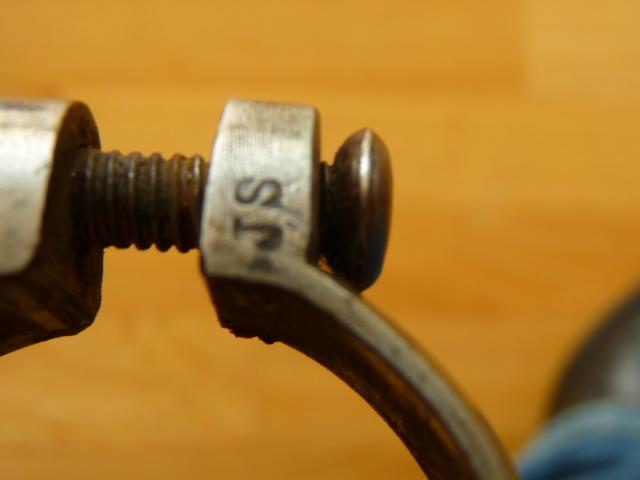
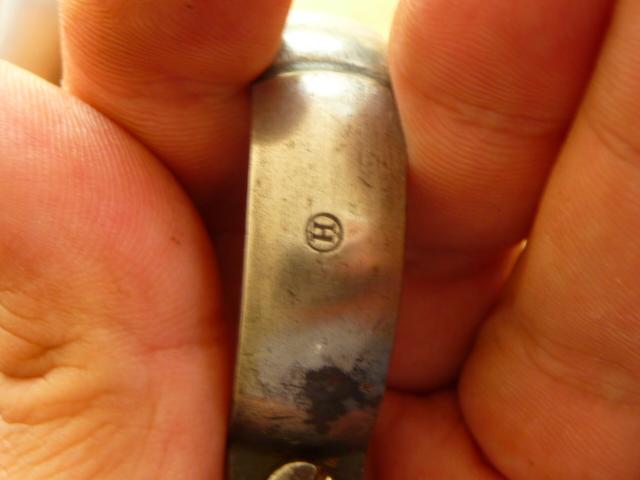
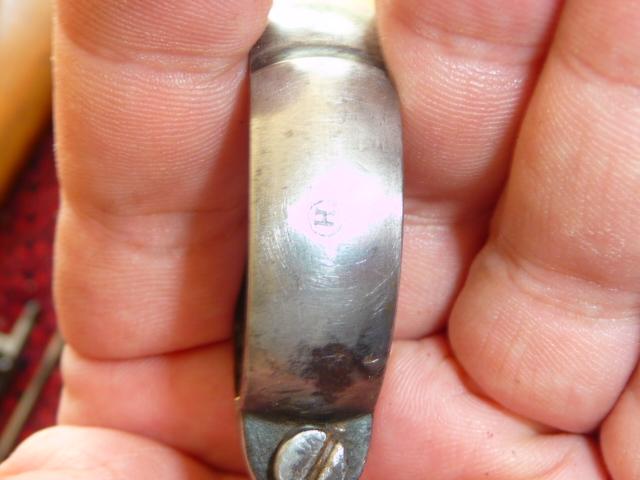
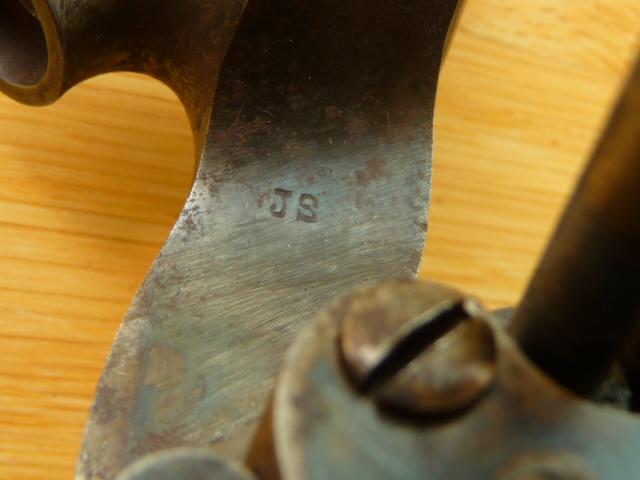
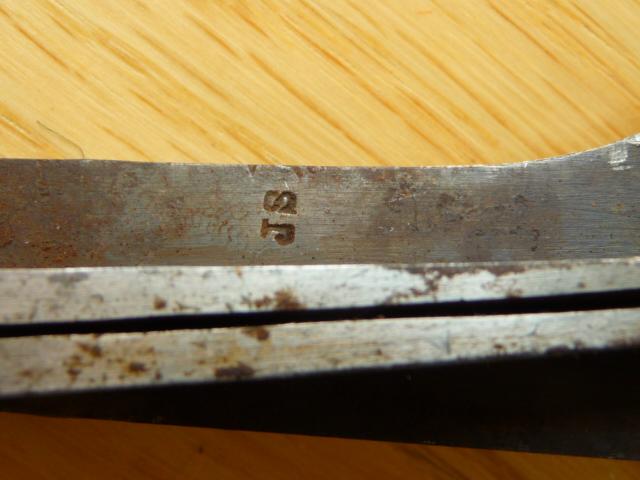
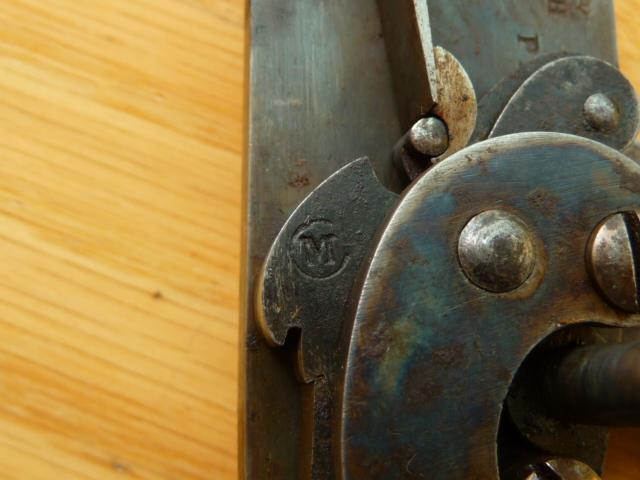

P.J. MALHERBE
It’s a cavalry pistol of type 16/22 I think. This
weapon was manufactured in Liège in 1831 by the manufacturer
Philipe J.
Malherbe. It is a copy of the 1922 French
cavalry pistol although the dimensions and shape are somewhat different. The
pistol is 0m3519, the barrel is round, the thunder has 5 sides, the "capucine"
is made of brass. The cap is also made of brass is equipped with an iron ring.
This
model was intended for the “great cavalry” because the mouthpiece was pierced to
receive a rod with a nail head and a threaded end. It was undoubtedly one of the
very first pistols produced for the Belgian cavalry.
It bears
a hallmark of the Liège proofhouse, namely:
ELG* in a vertical oval: definitive acceptance, in use
from 1818 to 1893
(Five-pointed star!)
The
weapon also bears the following markings:
P.J.
Malhebe à Liège:
brand of the Liège manufacturer.
GB in a
lying oval:
mark of the Belgian government indicating that it is state property.
Circle
on the butt:
showing GB (Belgian government) 1831 (year of manufacture), AW
(Inspector’s initials. I don’t know about the
other brands.
ID*:
meaning unknown, its origin is probably military.
S.D:
same.
HF
crowned: it is probably a subcontractor of Malherbe?
T.R.: Unknown?
GG
P.J. MALHERBE
It is a percussion rifle comprising a percussion plate and its outer hammer. The
round barrel is equipped with a cursor viewfinder and a rectangular back sight.
The trigger is curved under a round bridge.
The butt seems to me to be
made of walnut shaped in the "English" way.
A
metal rod is slid under the barrel. The counterplate consists of a simple metal
bar fixed by 2 screws.
The articulated arm asks me about its functioning not visible in the photos.
If I’m mistaken, this gun doesn’t bear any proof mark?
The manufacturer is Philippe-Joseph Malherbe installed in the former imperial factory 25 quai Saint Léonard in Liège.
He was enrolled on the Liège proofhouse from 1836 to 1850.
He was then followed by P.J. Malherbe & Cie at the same address from 1850 to 1869.
In
1862, the activity was taken over by
Malherbe
Prosper!
GG
P. J. MALHERBE (montage ?)
Here is what seems to me to be a "composite" rifle (not to say "milking rifle"), made up of various and varied elements....including a lock signed P. J. Malherbe.
The stock certainly does not date from the first half of the 19th century...
There could be punches on or under the barrel.
There's been a lot of Malherbe.
This PJ Malherbe was registered at the proofhouse of Liège from 1836 to 1850 (which corresponds to the lock).
It was established at 25 quai Saint Léonard in Liège.
GP
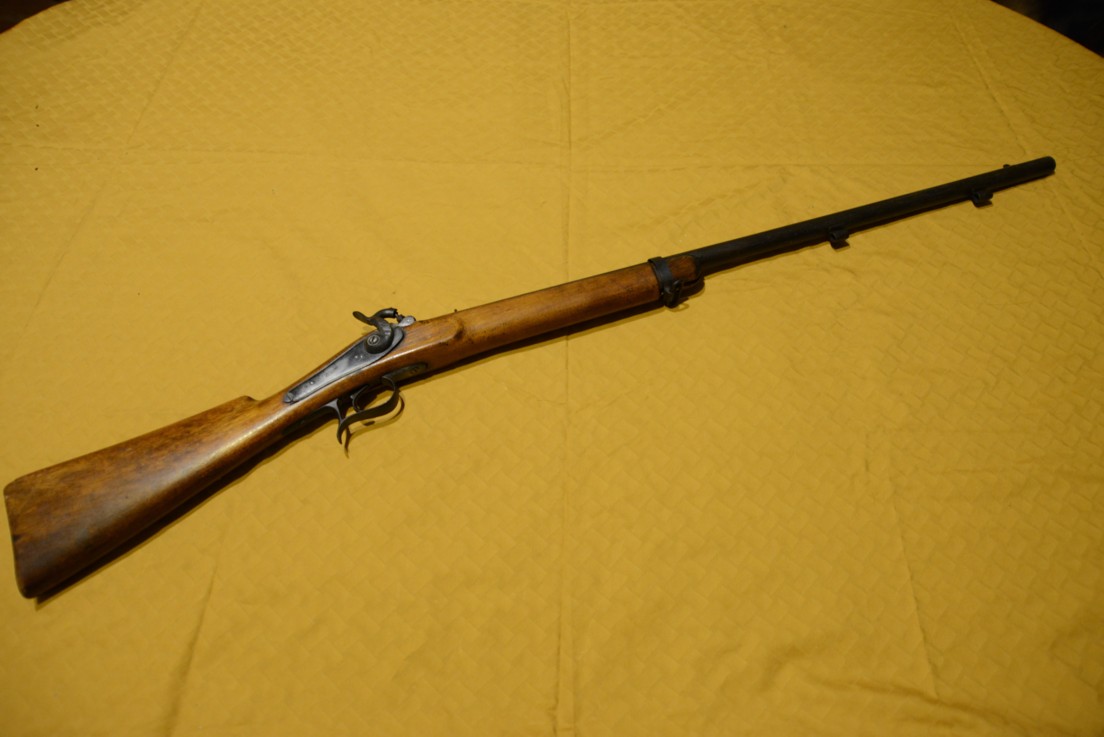
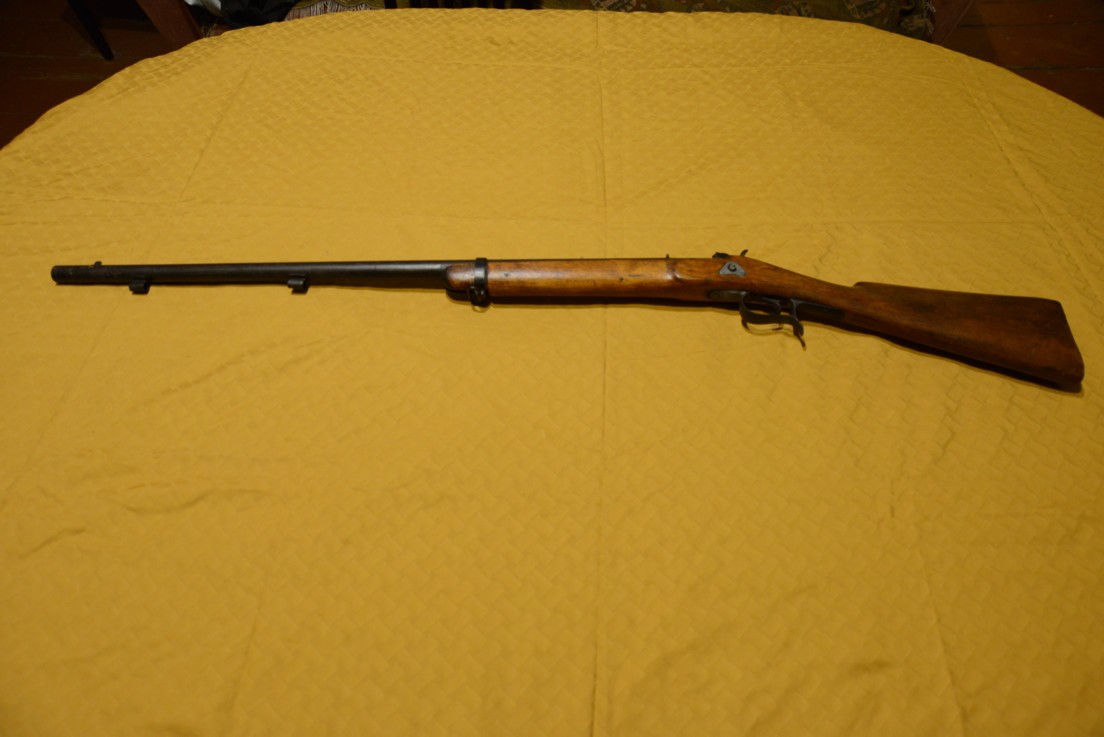
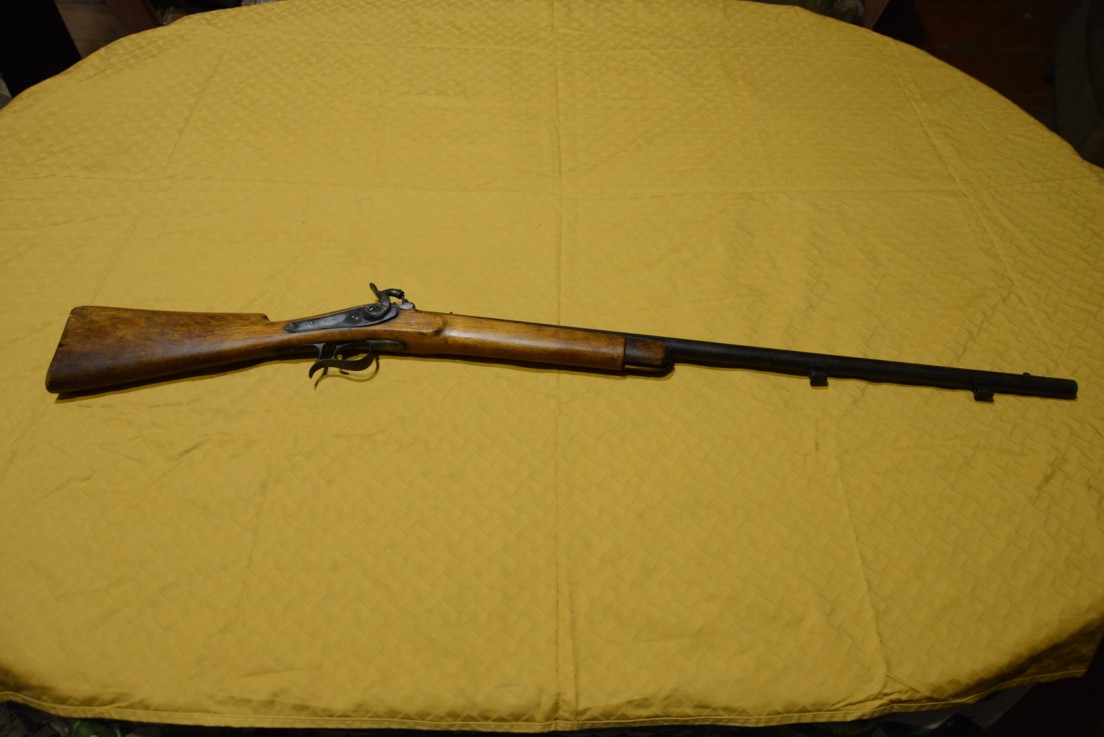
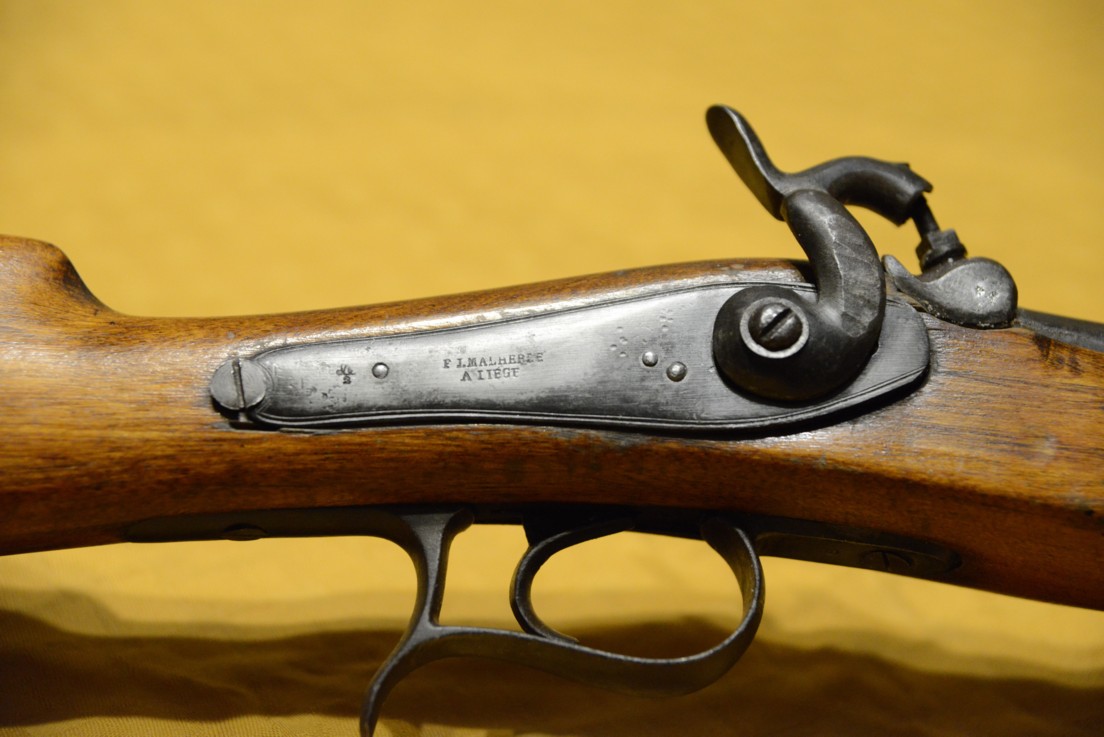
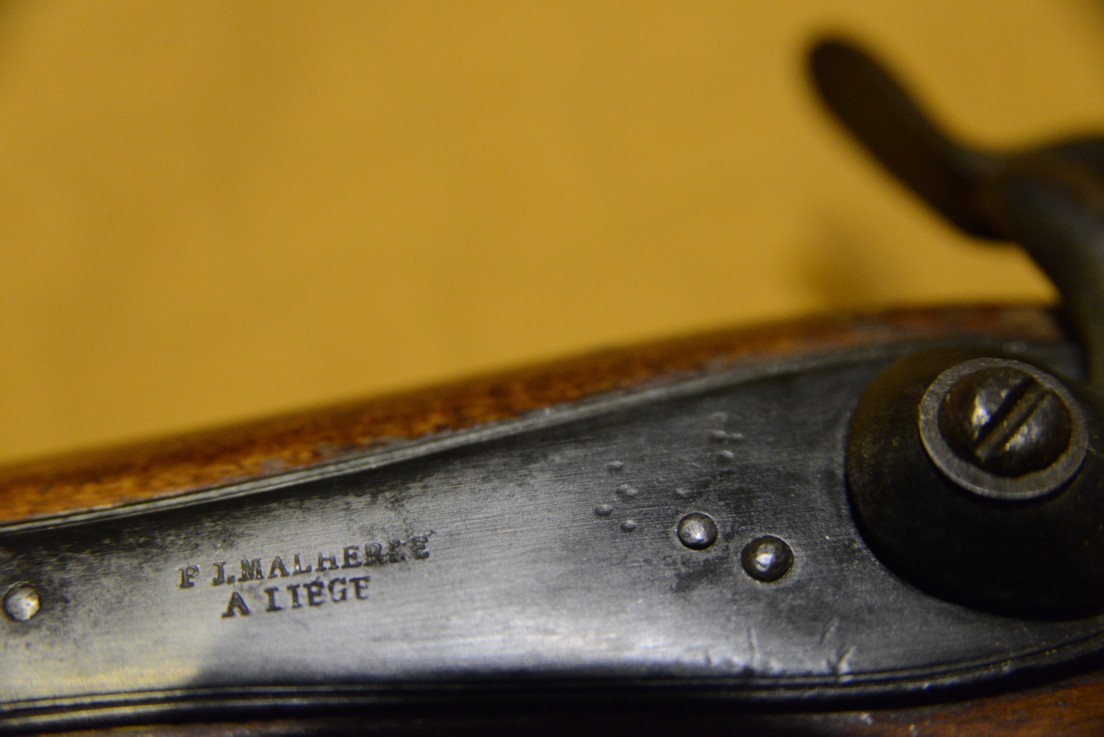



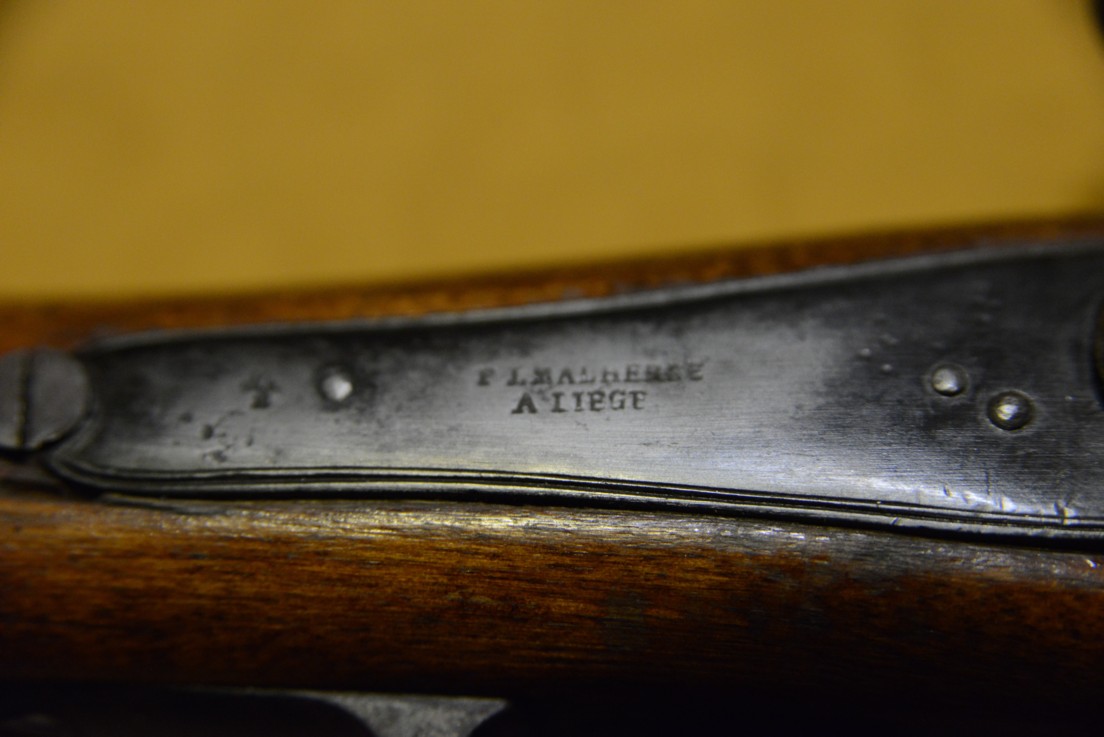
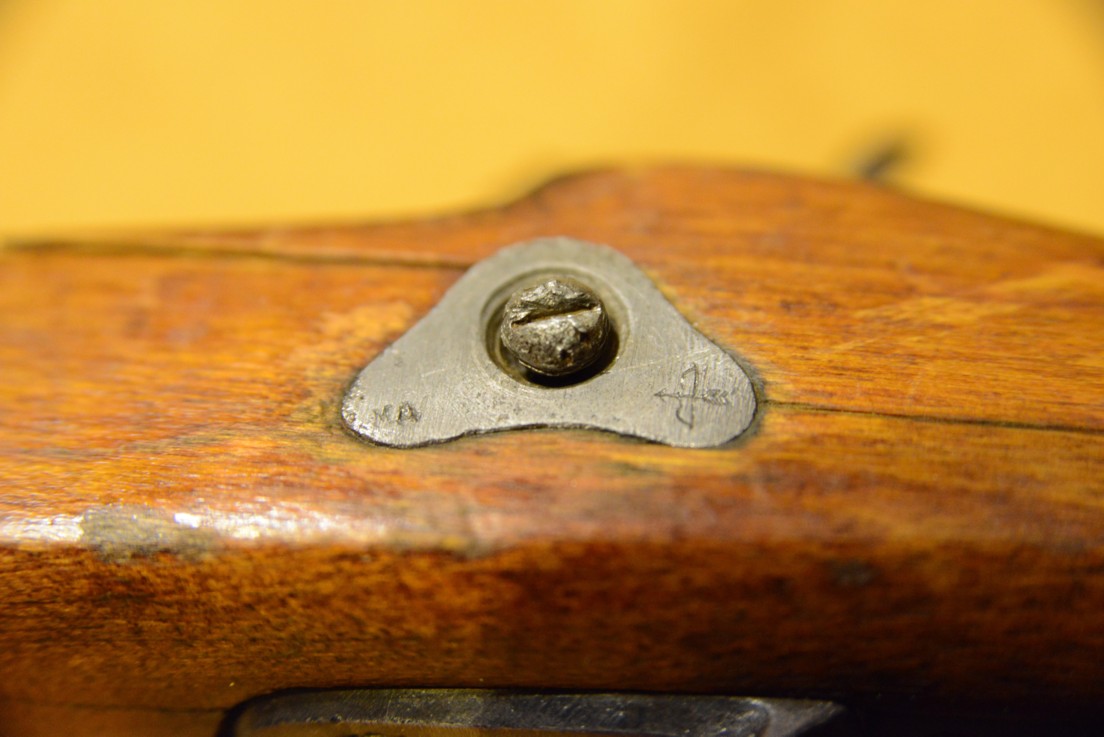
P.J. MALHERBE & Cie
Percussion rifle of calibre .58.
Back sight with different distance 200/400/600, brass barley grain. Percussion breech with smooth plate bearing the name “PJ Malherbe Cie à Liège.”
Walnut stock with cheek rest and steel buttplate.
It carries a regimental or armory stamp, see photo.
Pierre Joseph Malherbe, 1822-1867 (Stöckel 2, p. 835) Total length: 134 cm, barrel length: 94.5 cm.
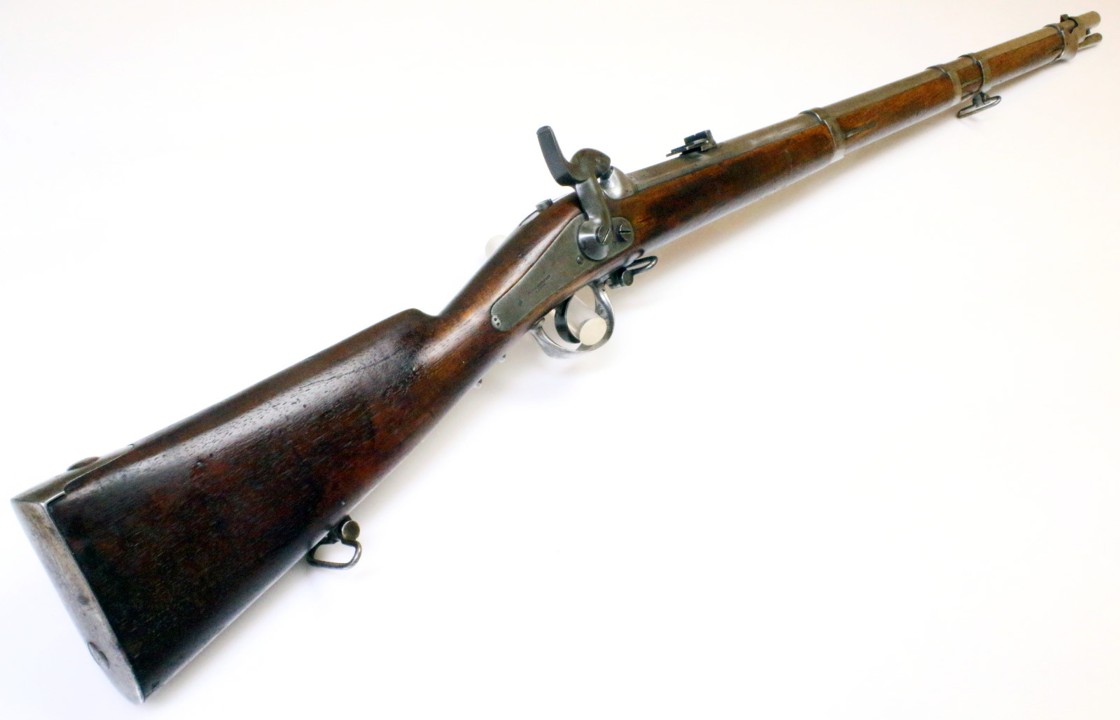
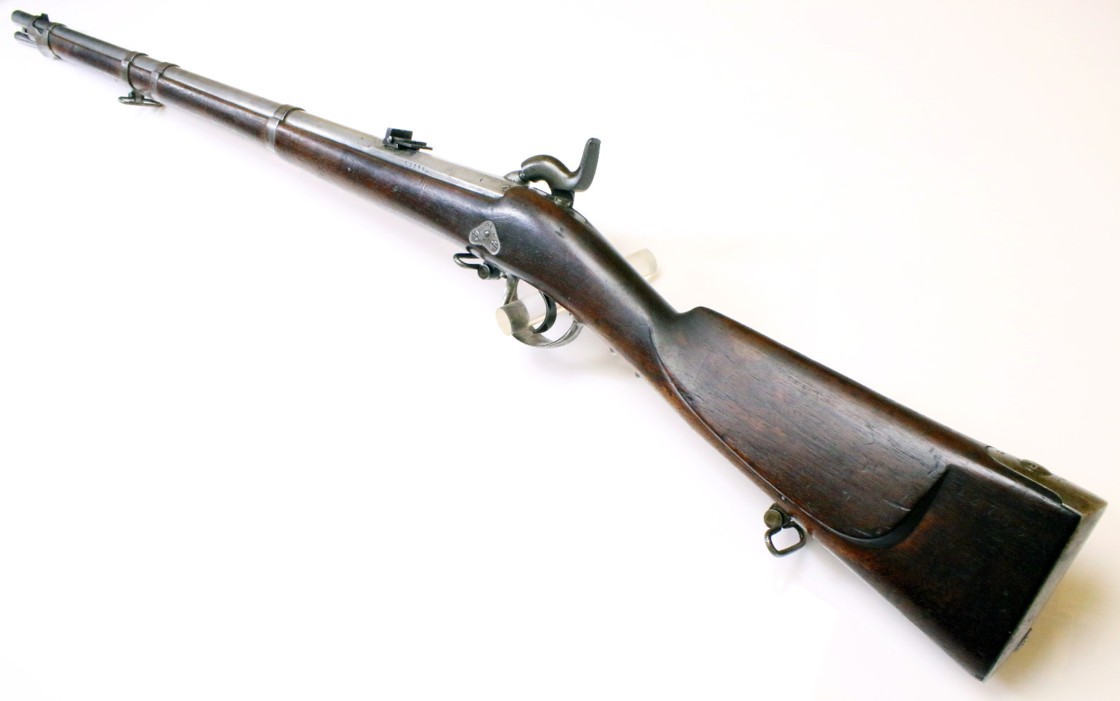
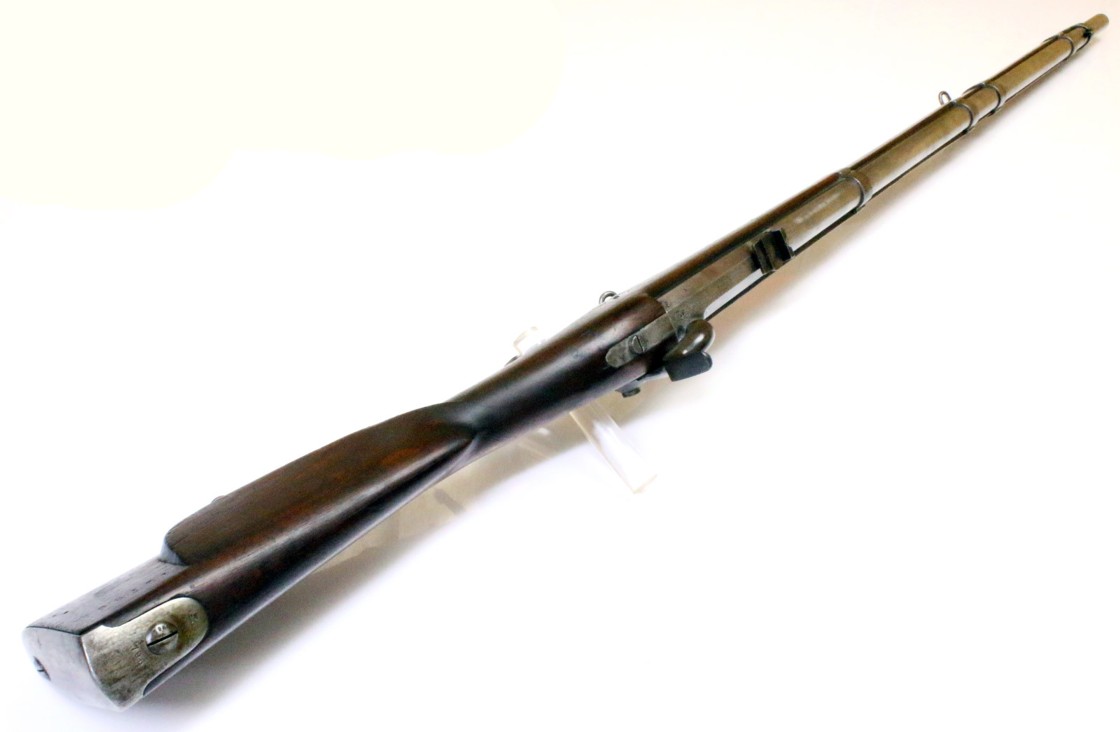

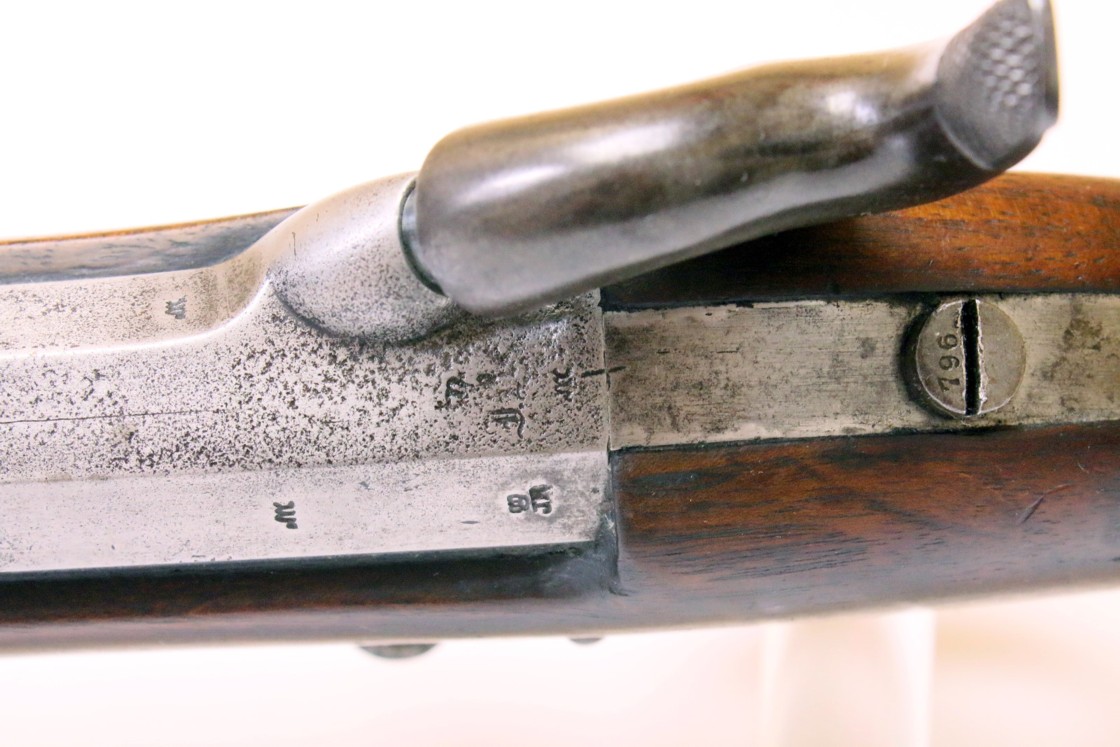
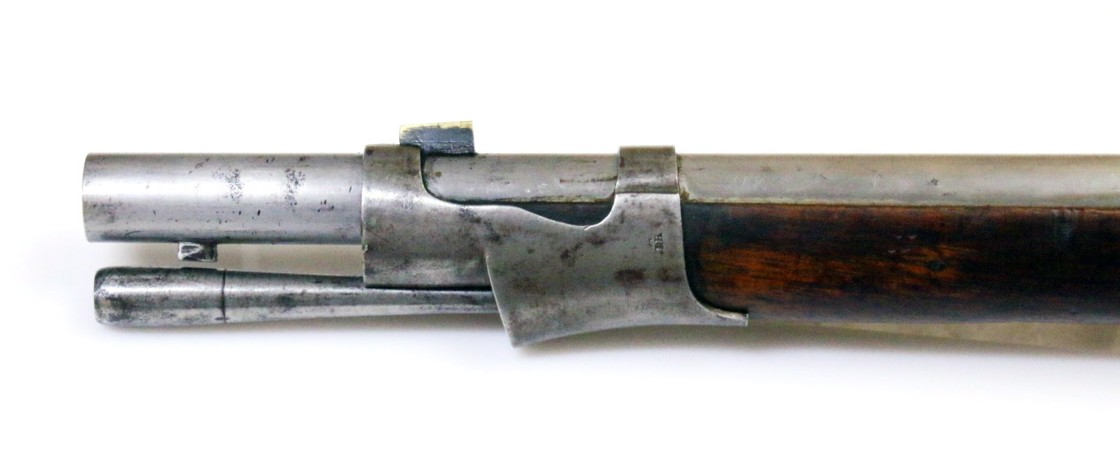
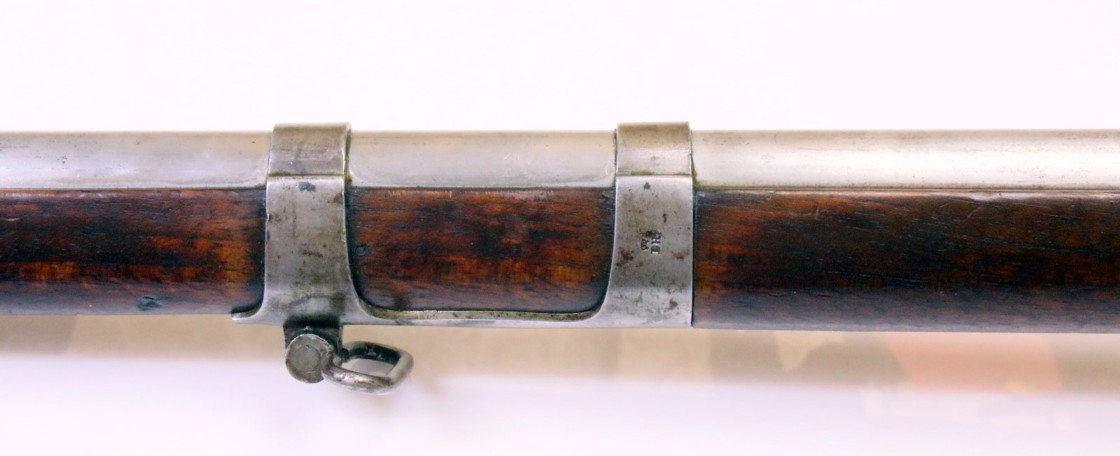
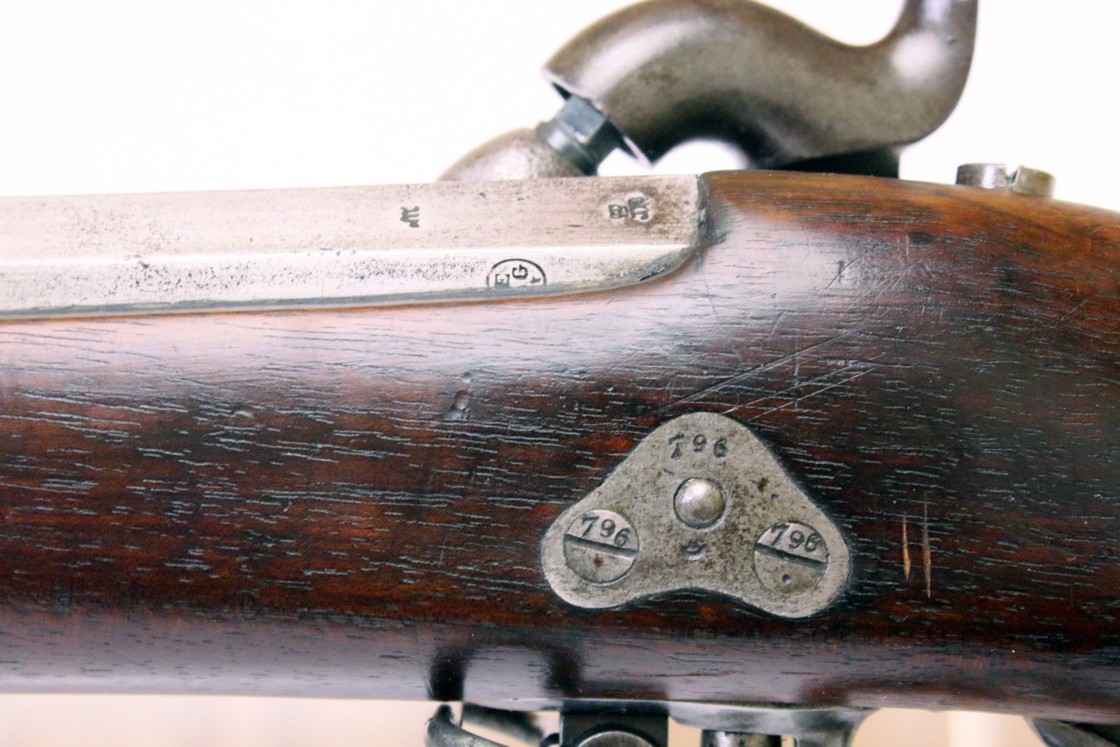
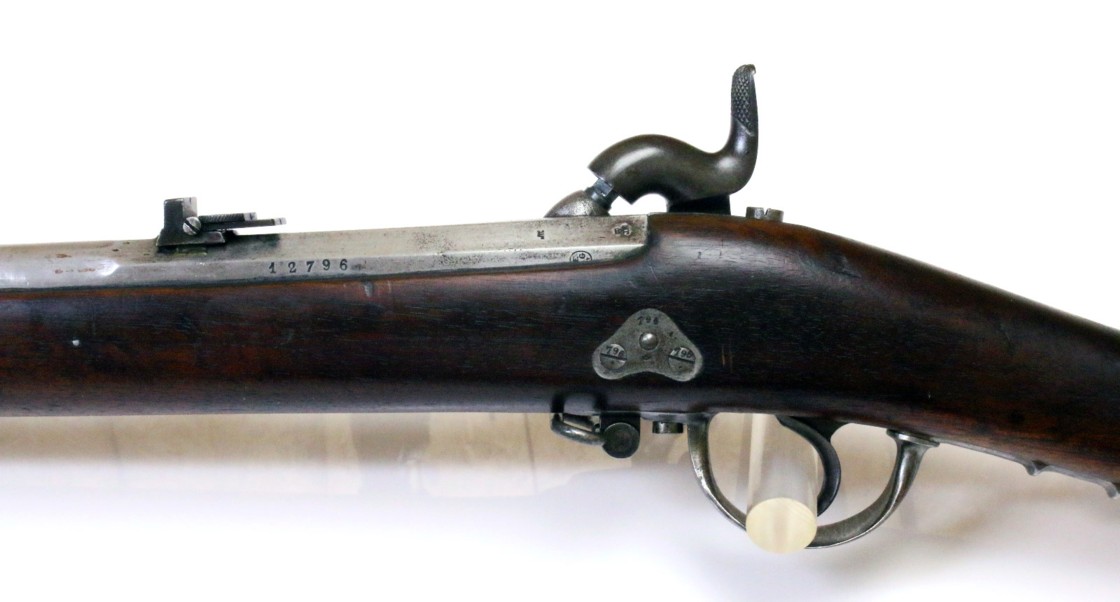
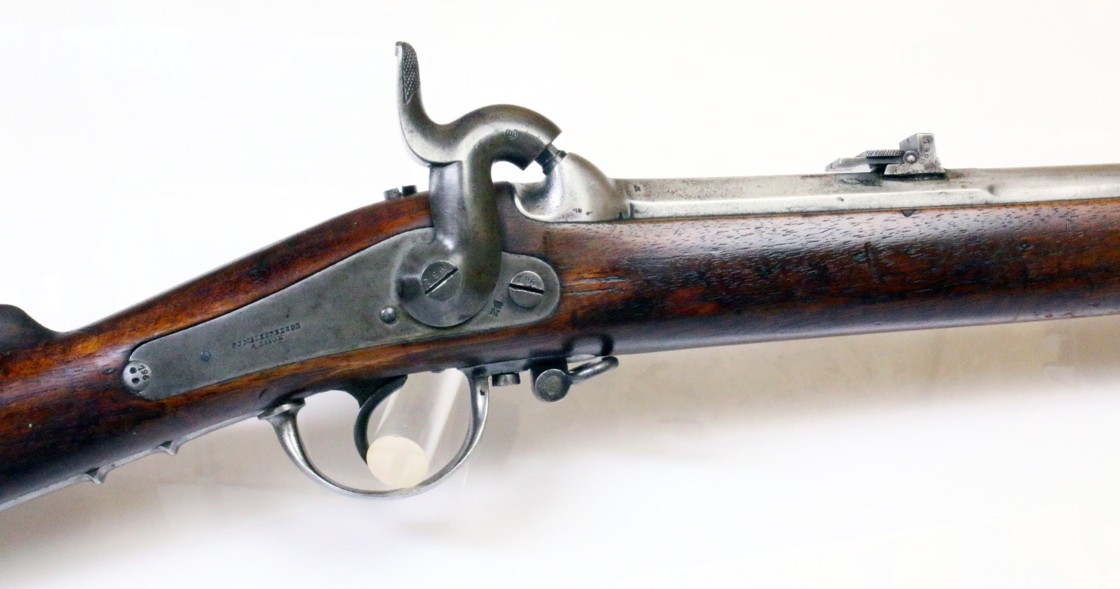

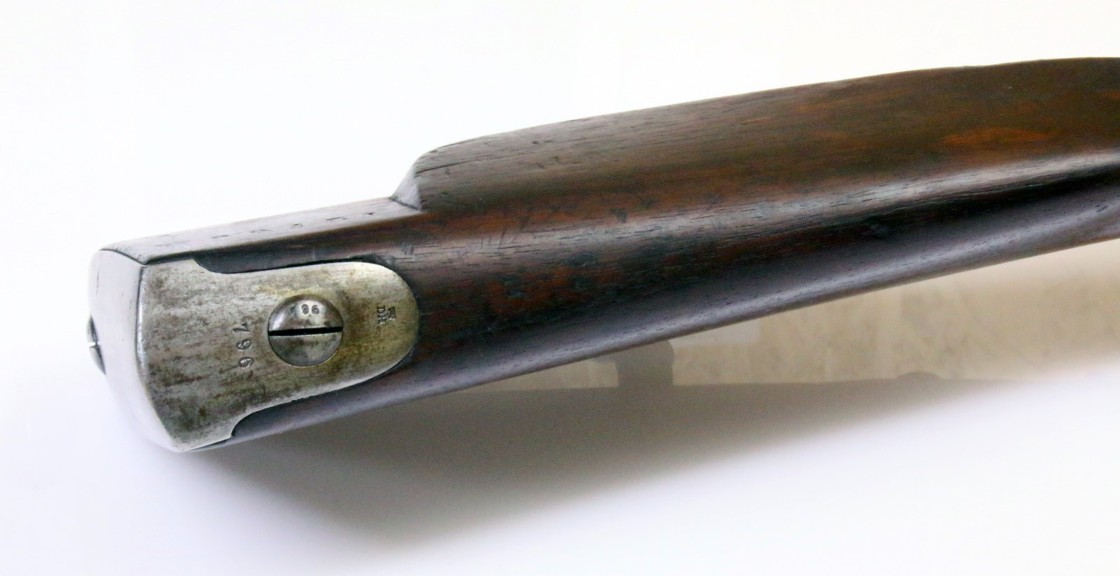

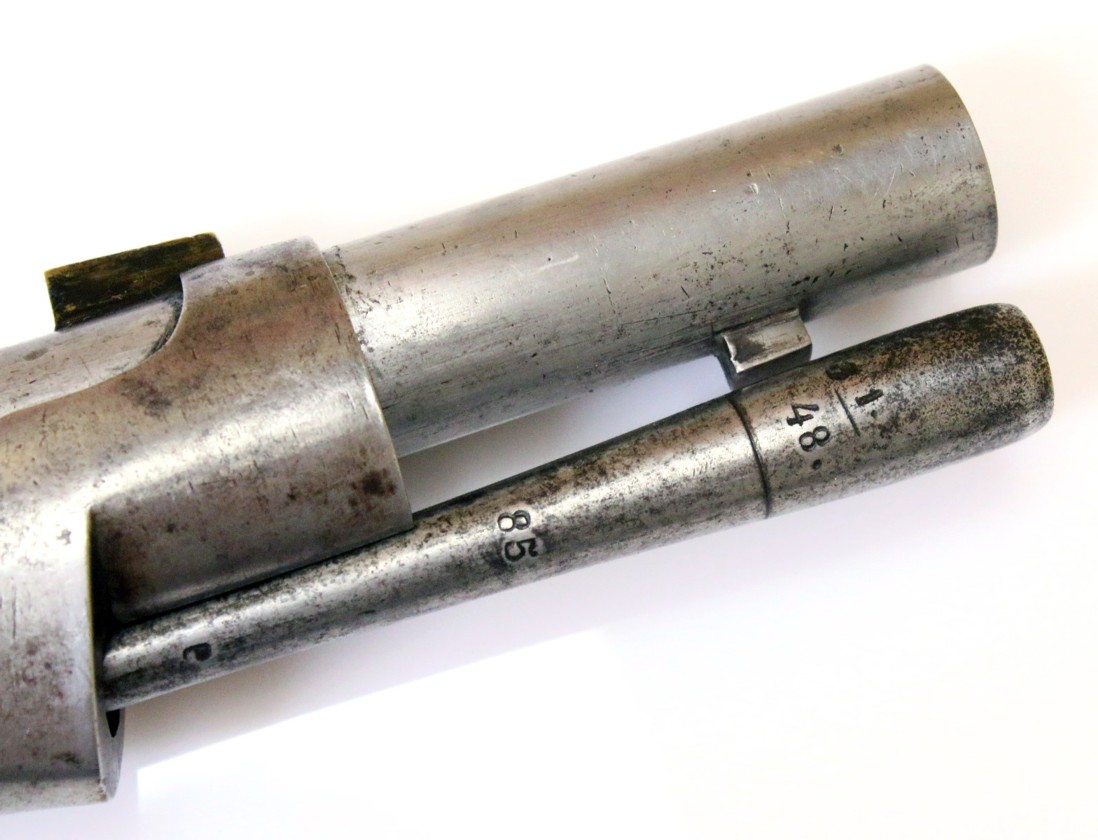

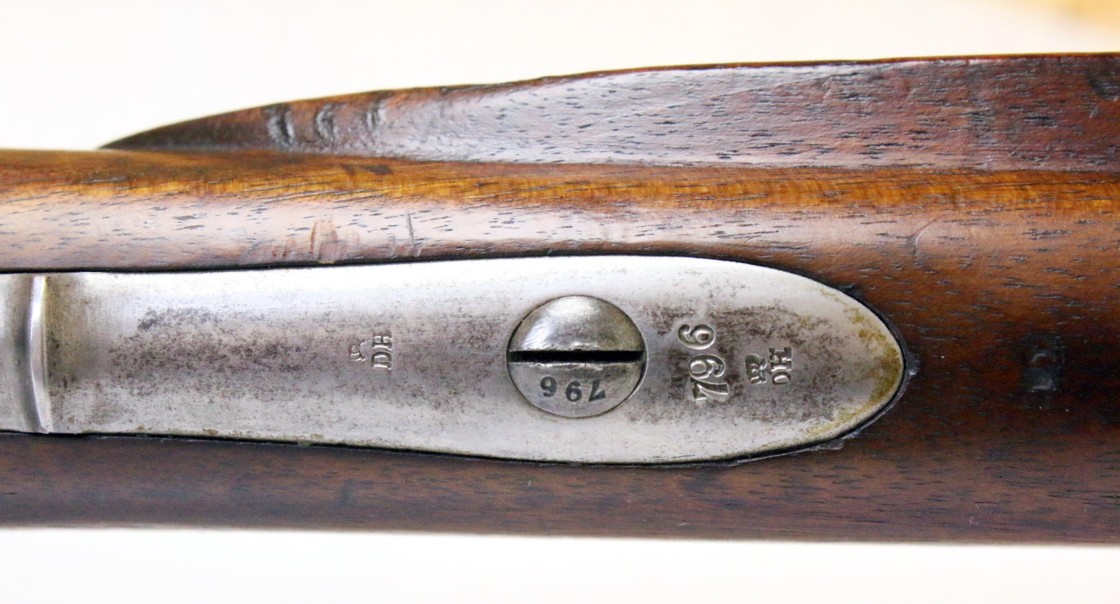


P.J. MALHERBE
Here a short weapon (rifle or
snap hook) of manufacture of Liège since well signed PJ Malherbe on the lock.
There are also punches from the Liège Proofhouse.
A weapon
steeped in history since, according to its lucky American owner, it has been in
his family since 1863, when his great-great-grandfather brought it back as a
"souvenir" from the Battle of Gettysburg.
It has
an undeniable family resemblance with the French weapons of 1853, 1857, 1859
etc. : back plate, typical hammer shape, a grenadière and a mouthpiece.
Missing the rod. Rail for fixing a bayonet sword.
The rising may not be of origin.
According to the lucky owner, the barrel, with an approximate diameter of . 47,
is not/no longer rifled, which is surprising to say the least.
It also
seems to me that there is a "problem" with the hammer's spring: I want as proof
the “hole” in the platter, where the nipple of the spring of the hammer should
keep it in the platter.
Markings
ELG on
star in oval: acceptance between 1846 and 1893;
Peron: inspection since 1853;
V under crown: countermark of a controller between 1853 and 1877;
M under crown: perhaps a mark of PJ Malherbe or a countermark of a controller between 1853 and 1877?
JH under
crown on rise and lock: unidentified.
PJ
Malherbe was one of the most important exporters of Liège arms to North America
during the Civil War, as it appears from the study carried out by Prof. Francis
Balace on the Liège armory during that period.
GP with the assistance of CP and PHL.

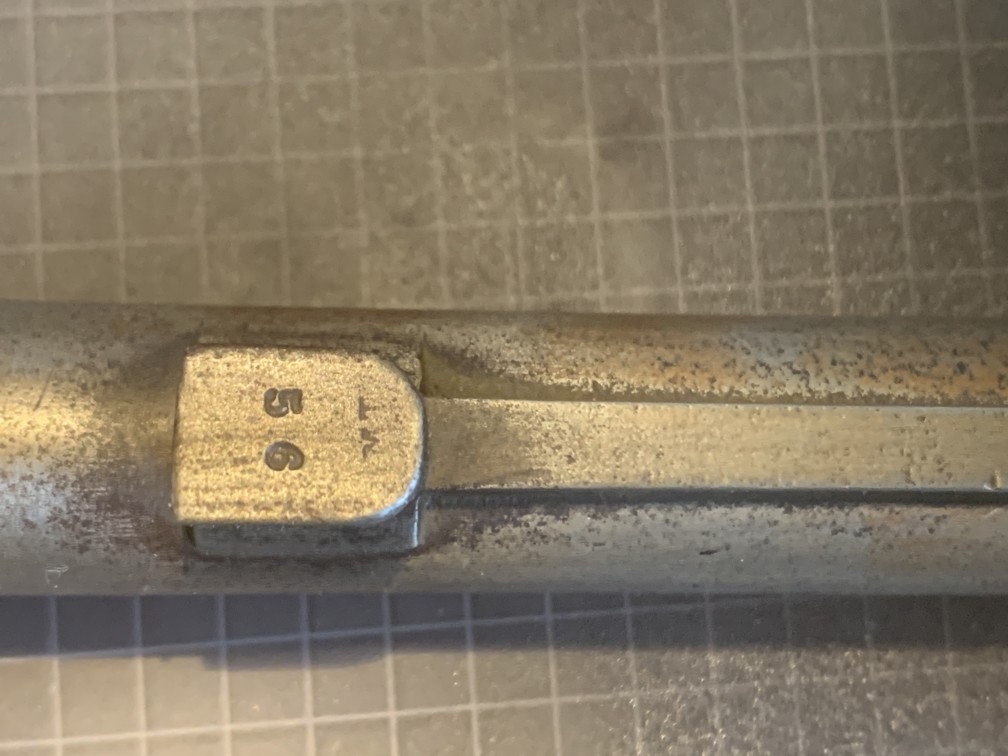

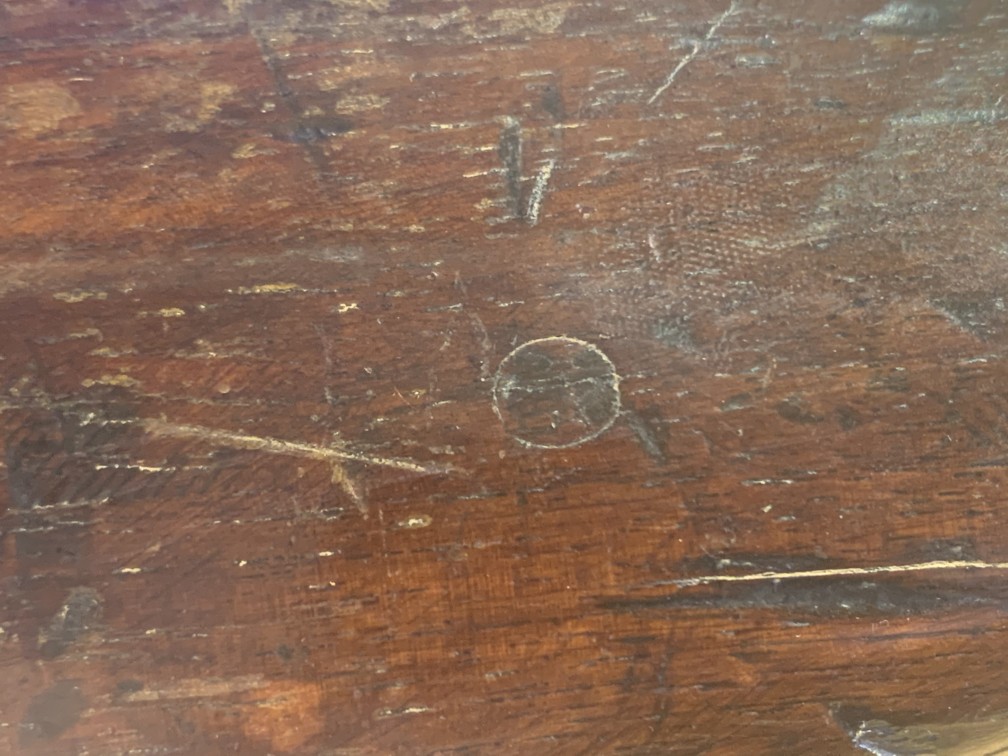
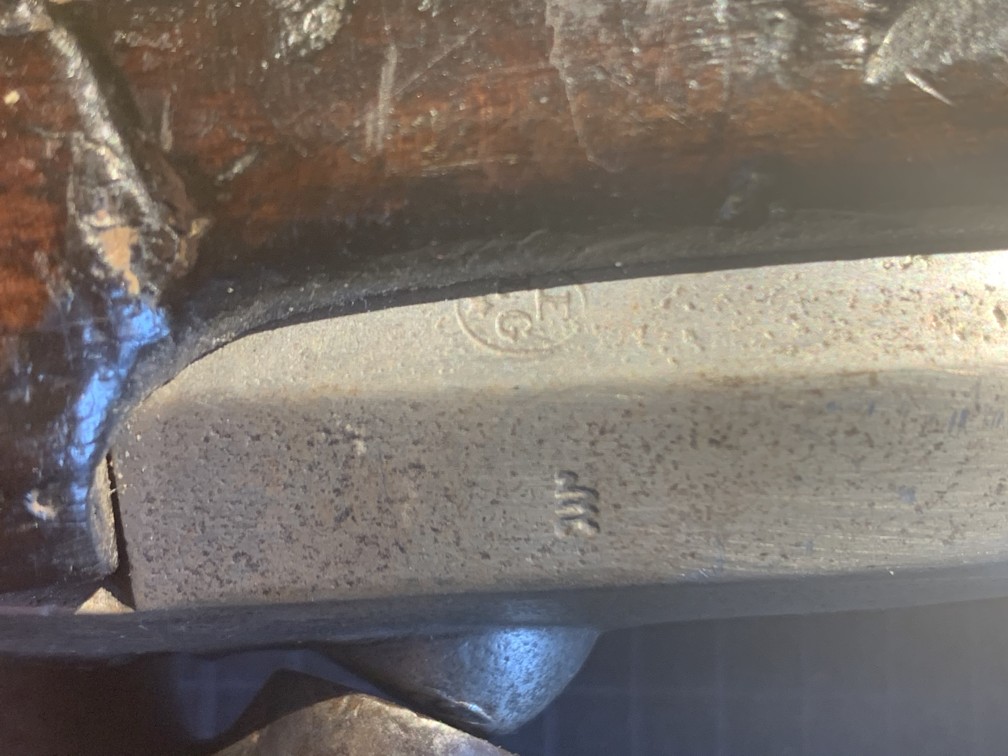

P.J. MALHERBE
Percussion riffle MALHERBE
It acts of a single shot gun, with percussion lock known as "retrograde" or back lock.
P.J. MALHERBE quay Saint Léonard in Liege, manufacturer well-known in Liege, it was registered with the house of tests of 1836 to 1869.
GG
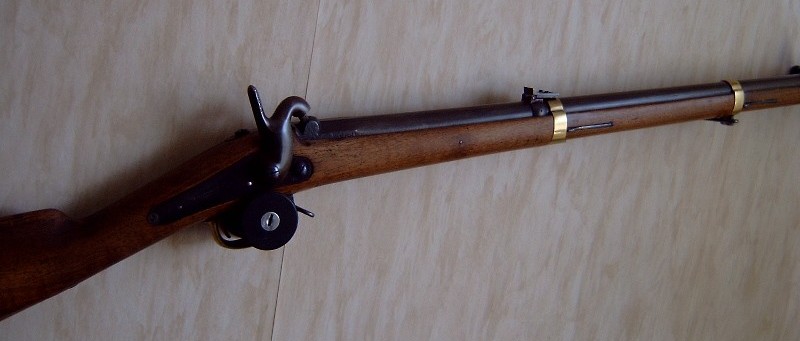
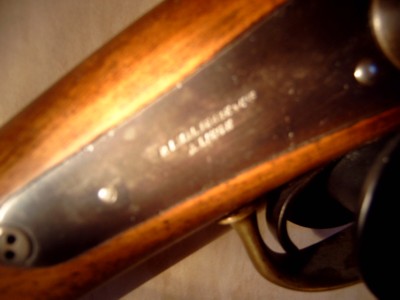
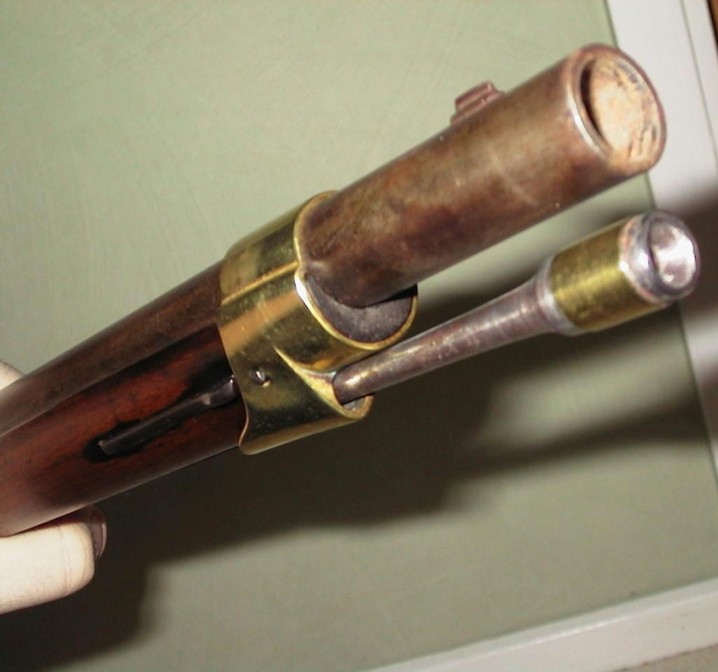
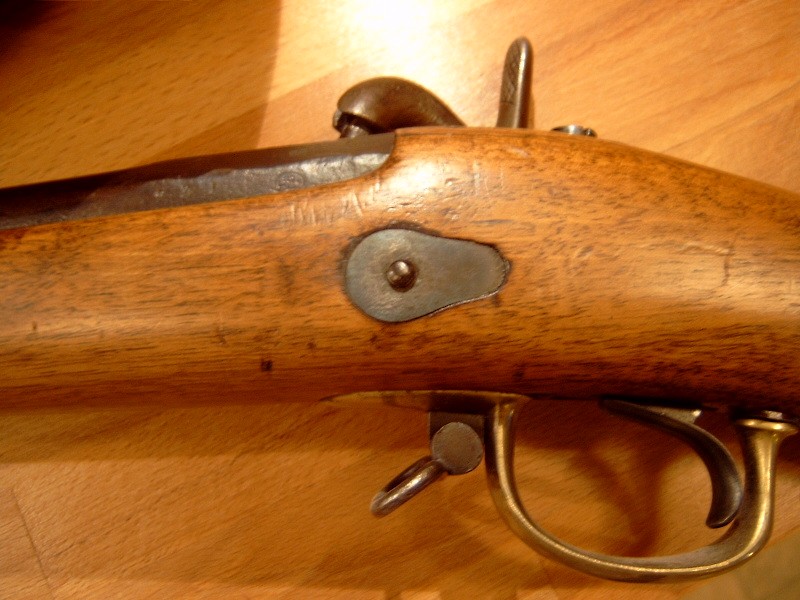
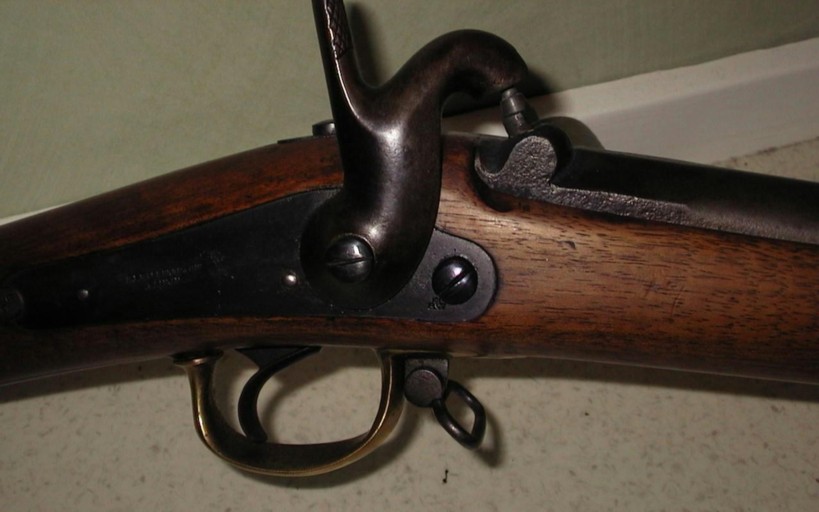
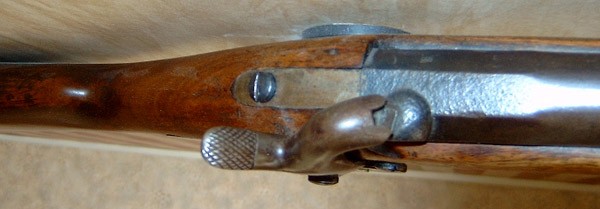

P.J.Malherbe
Snap hook of cavalry mod.1822 Manufactured since 1834 in Liege by the industry deprived for the Belgian light cavalry, derived from the snap hook of French cavalry model 1822.
Line out model 1834 (without the fastening screw of the model 1822.) Transformed into percussion from 1840 Overall length 0,879 m weight 2,400 kg gauges 17,1 mm.
Christian
The mark on the lock belongs to P.J. MALHERBE manufacturer of weapons in Liege quay St Léonard, 25 (Bench of test of Liege: 1836/1869)
GG
Many thanks to Christian for the photos and the technicals details


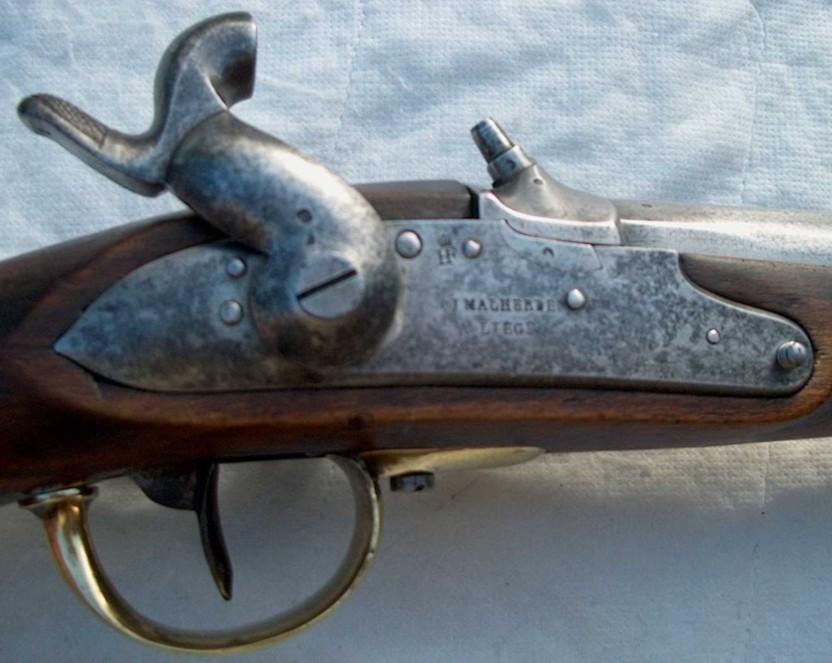
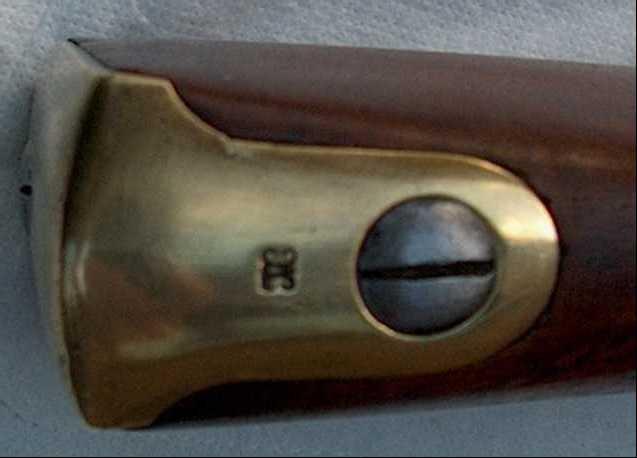
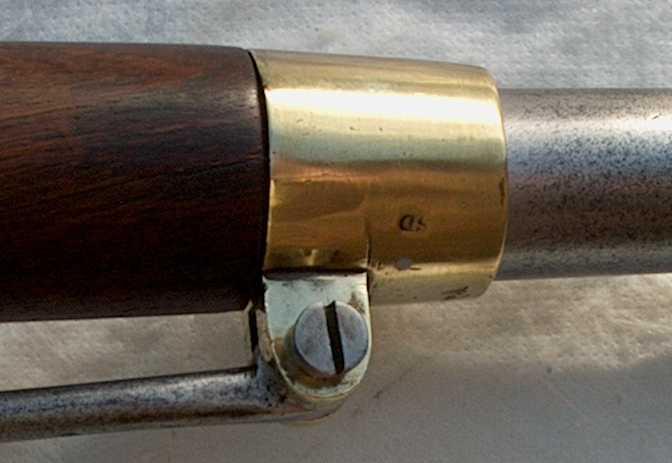
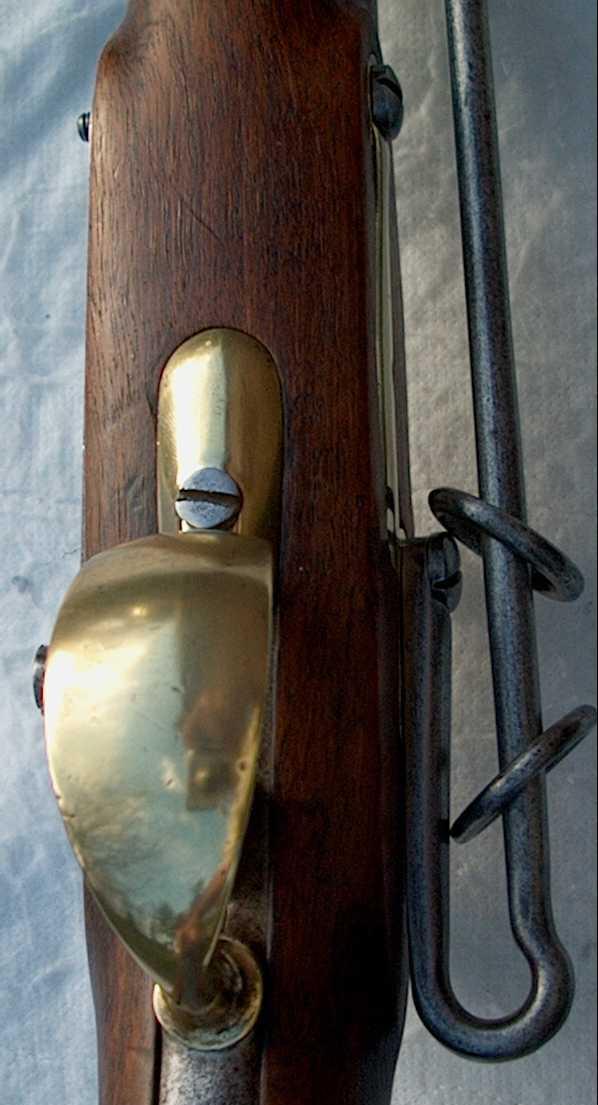

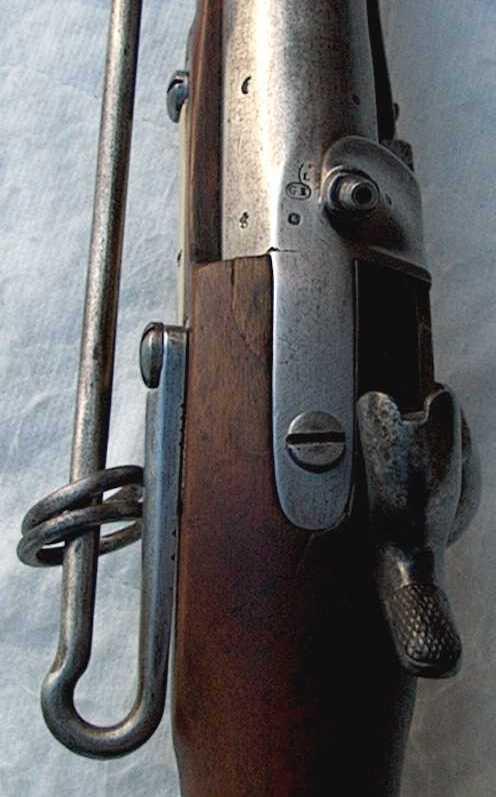
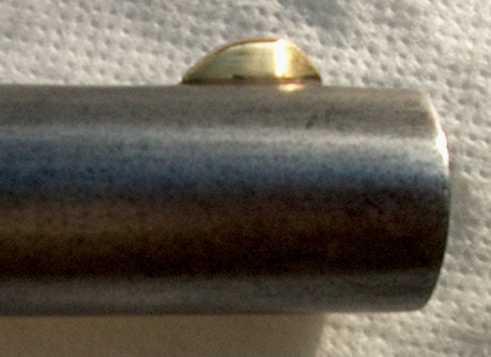
P.J. Malherbe
Many thanks to the "ROYAL ARMY MUSEUM" Bruxelles for the pictures.
(N° identification : F159 Collection of "Comte de Ribaucourt")
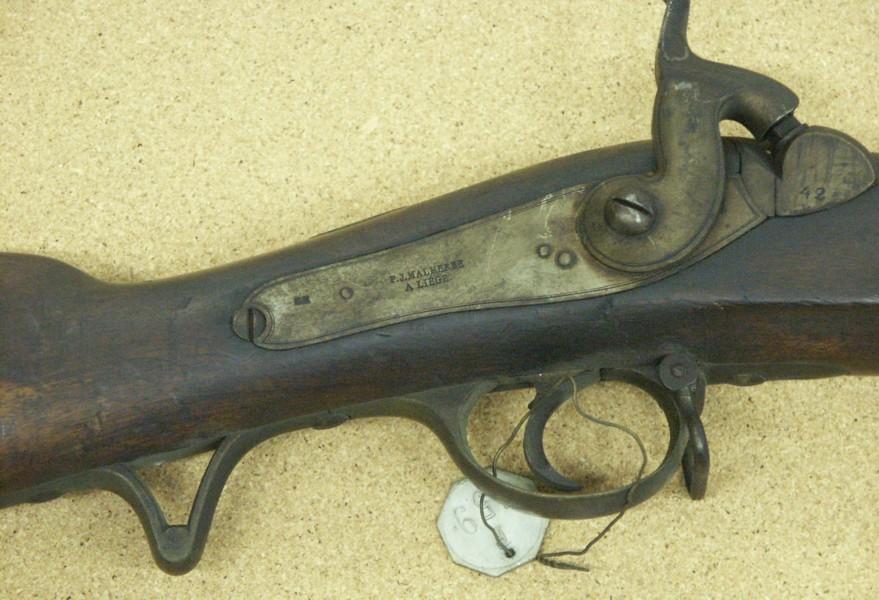


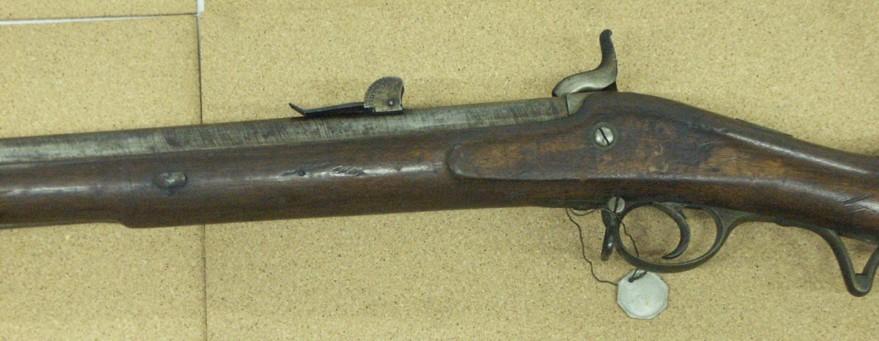


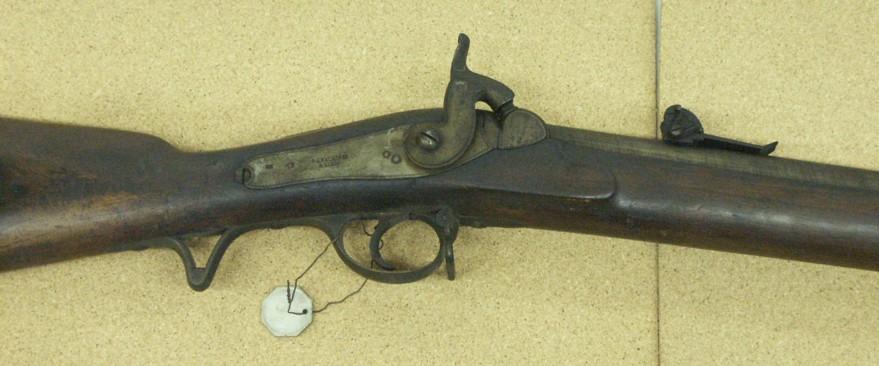
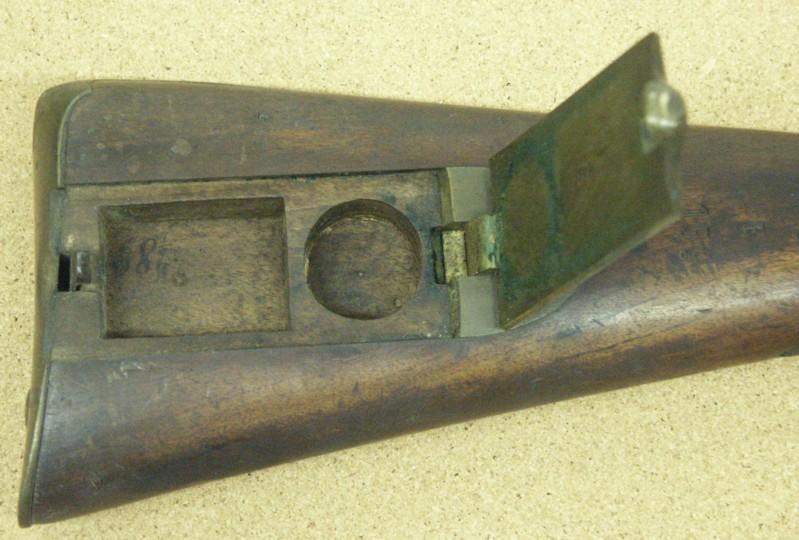
P.J. Malherbe
Manufactured fort he Sweden navy.
Photos "MUSEE ROYAL DE L' ARMEE - BRUXELLES" with my grateful thanks.